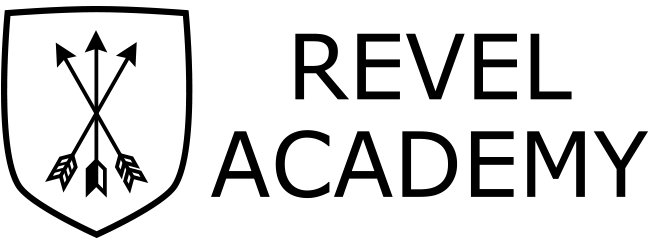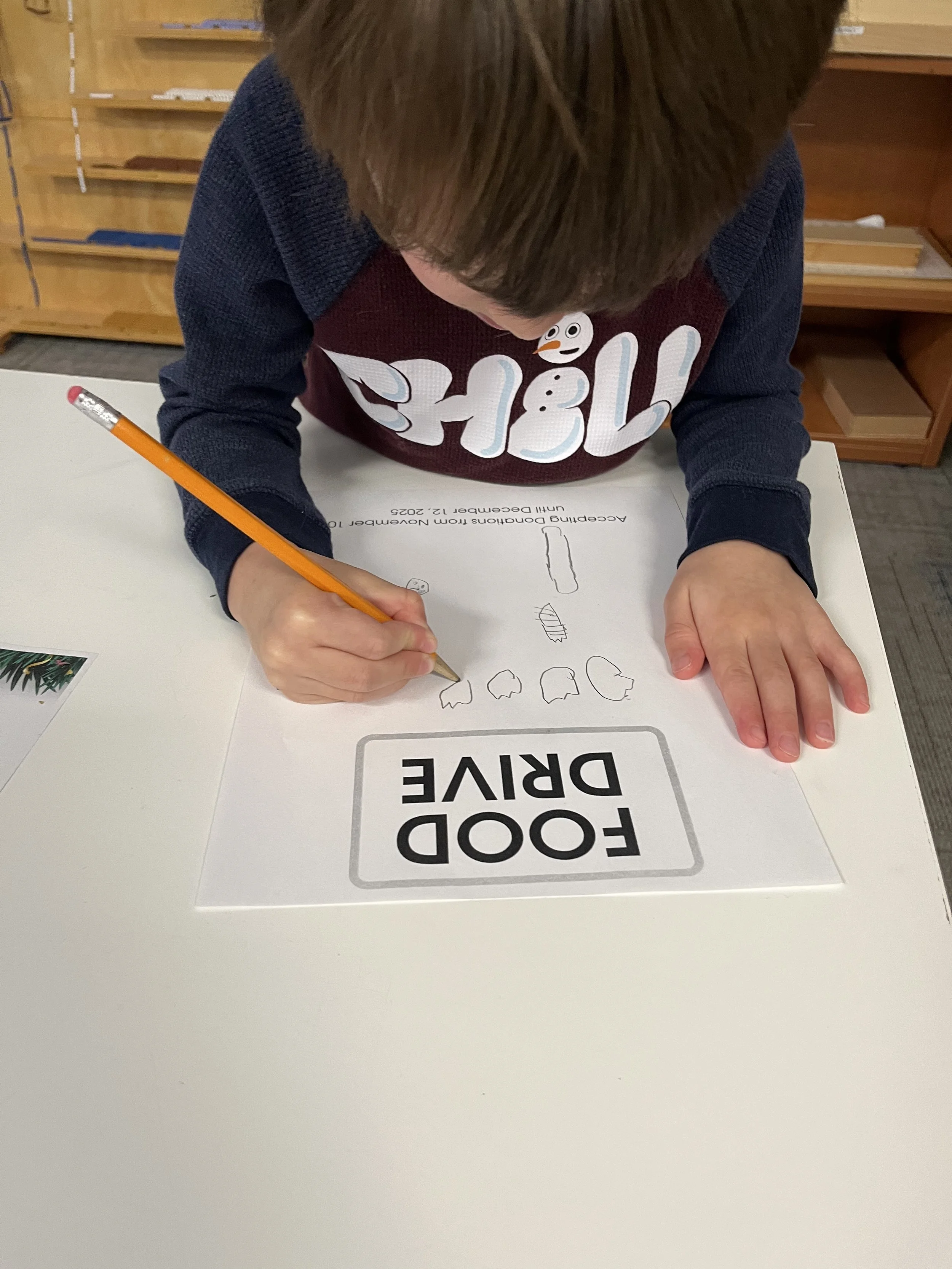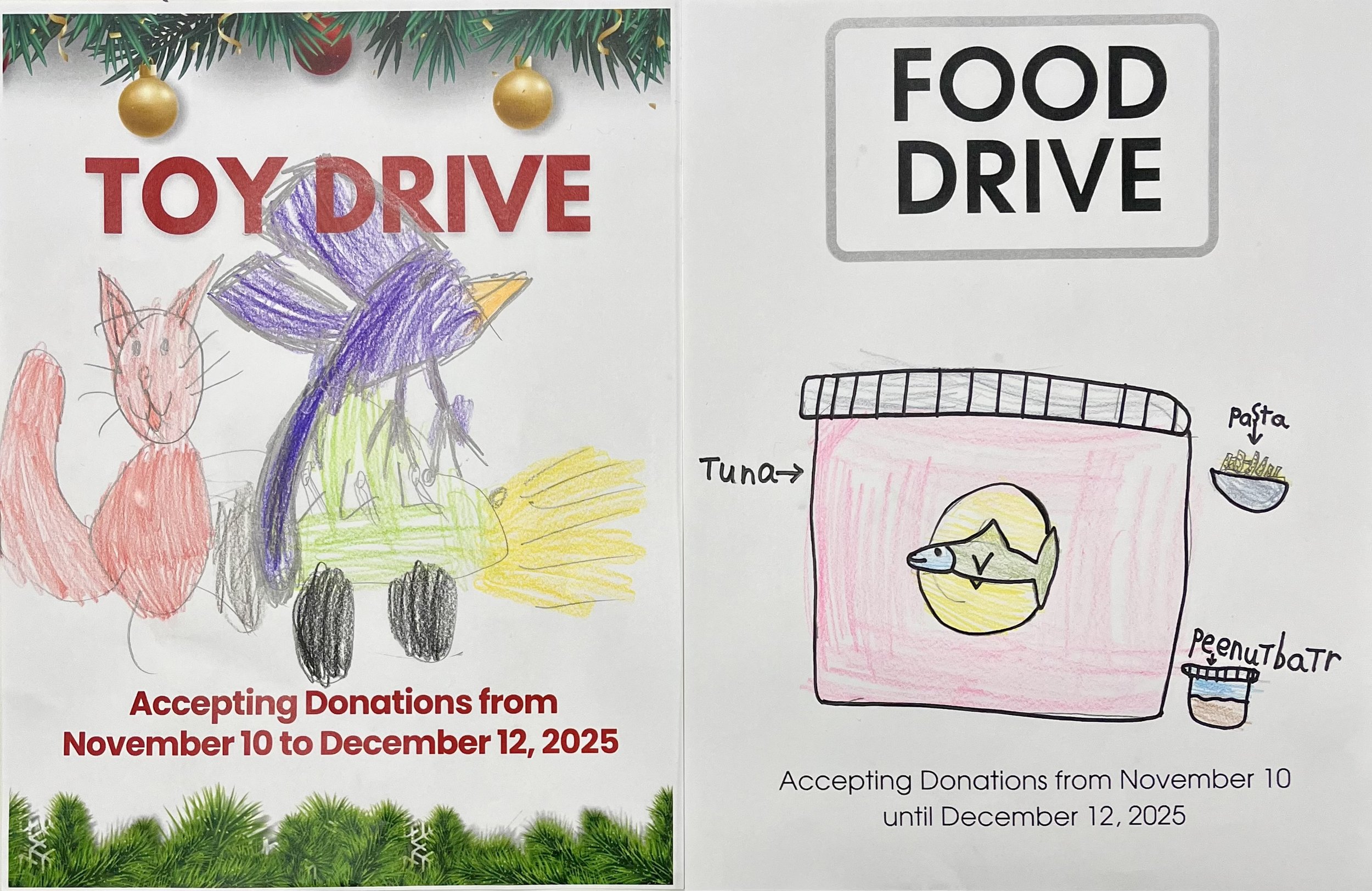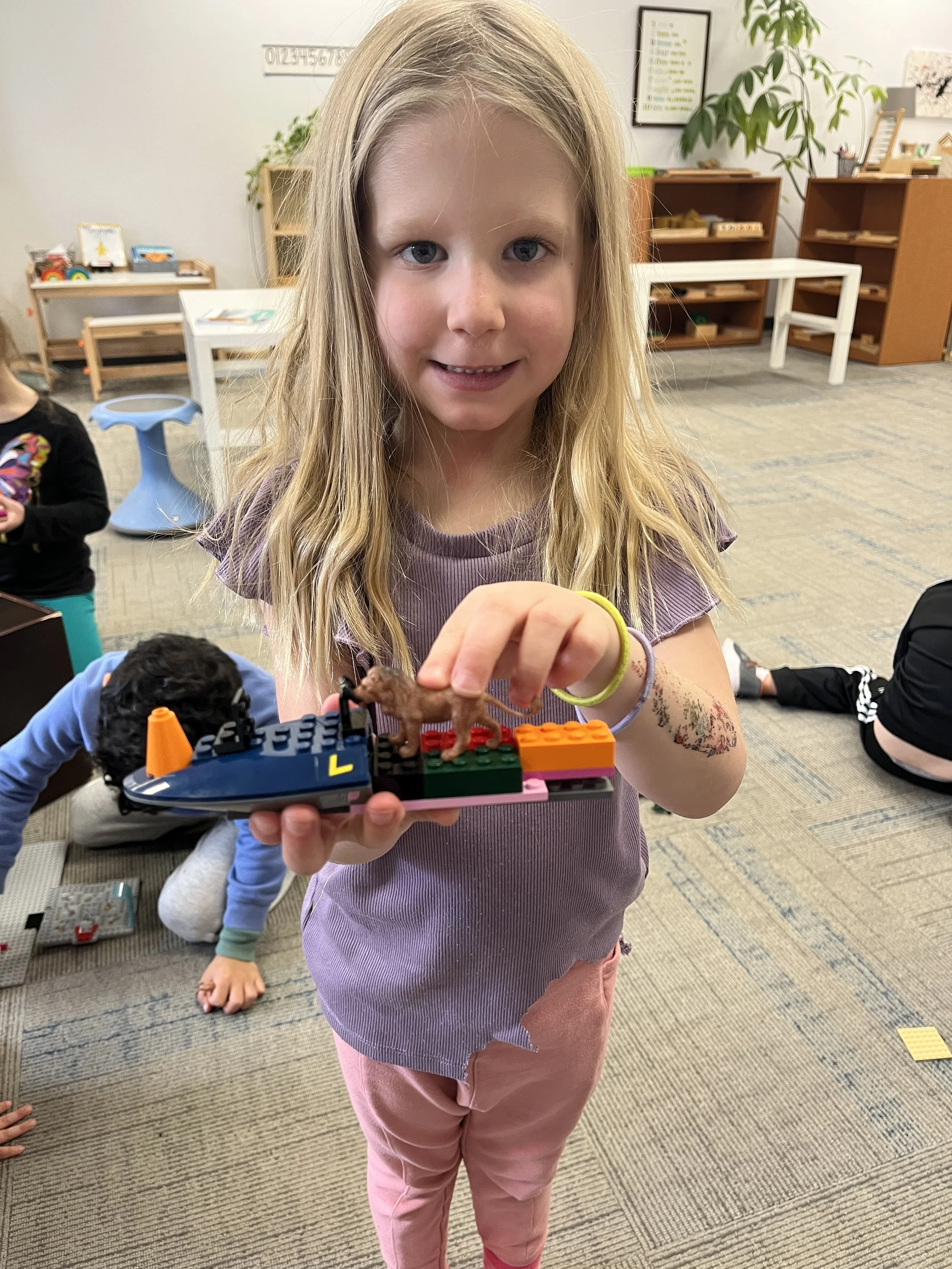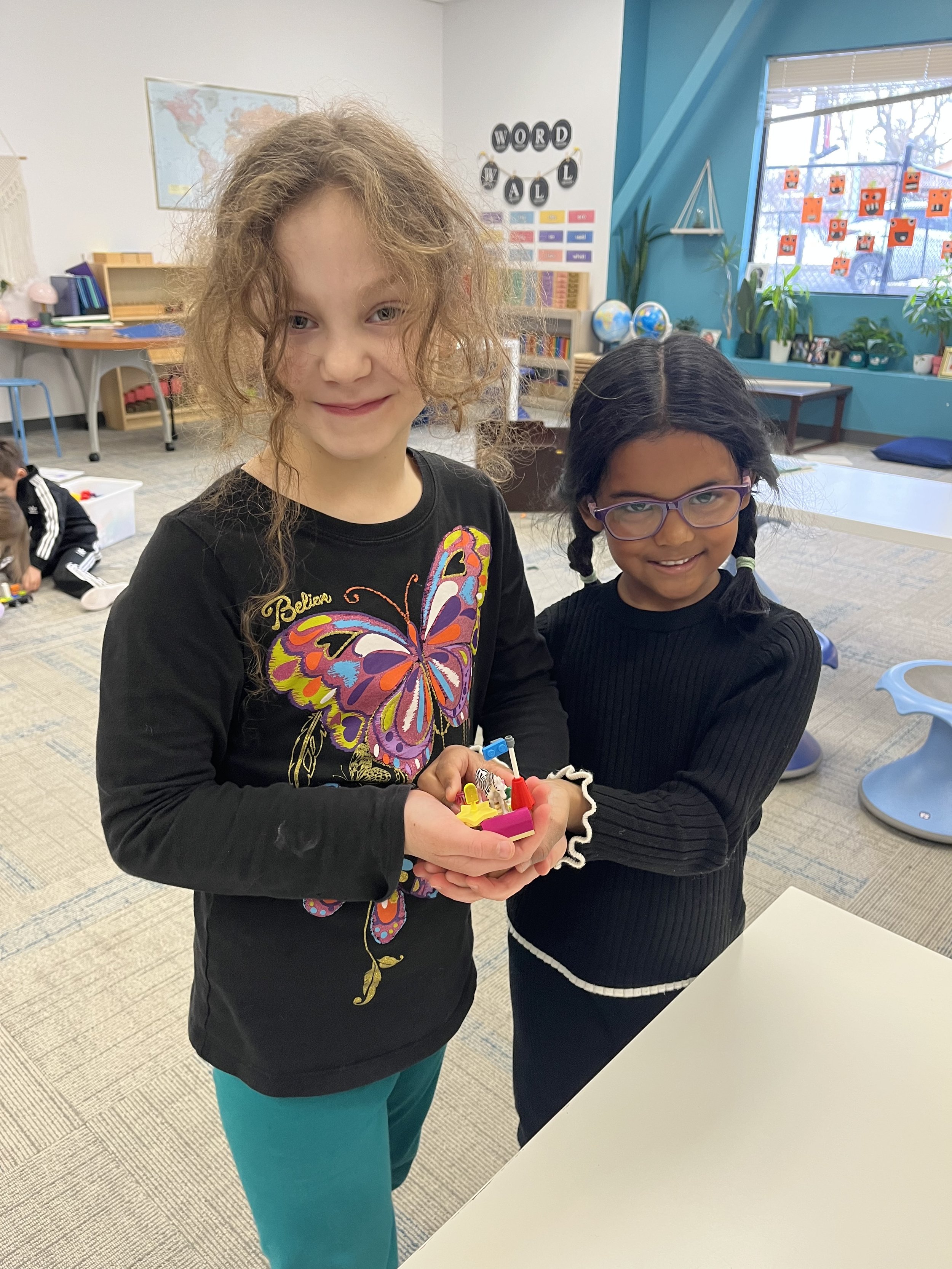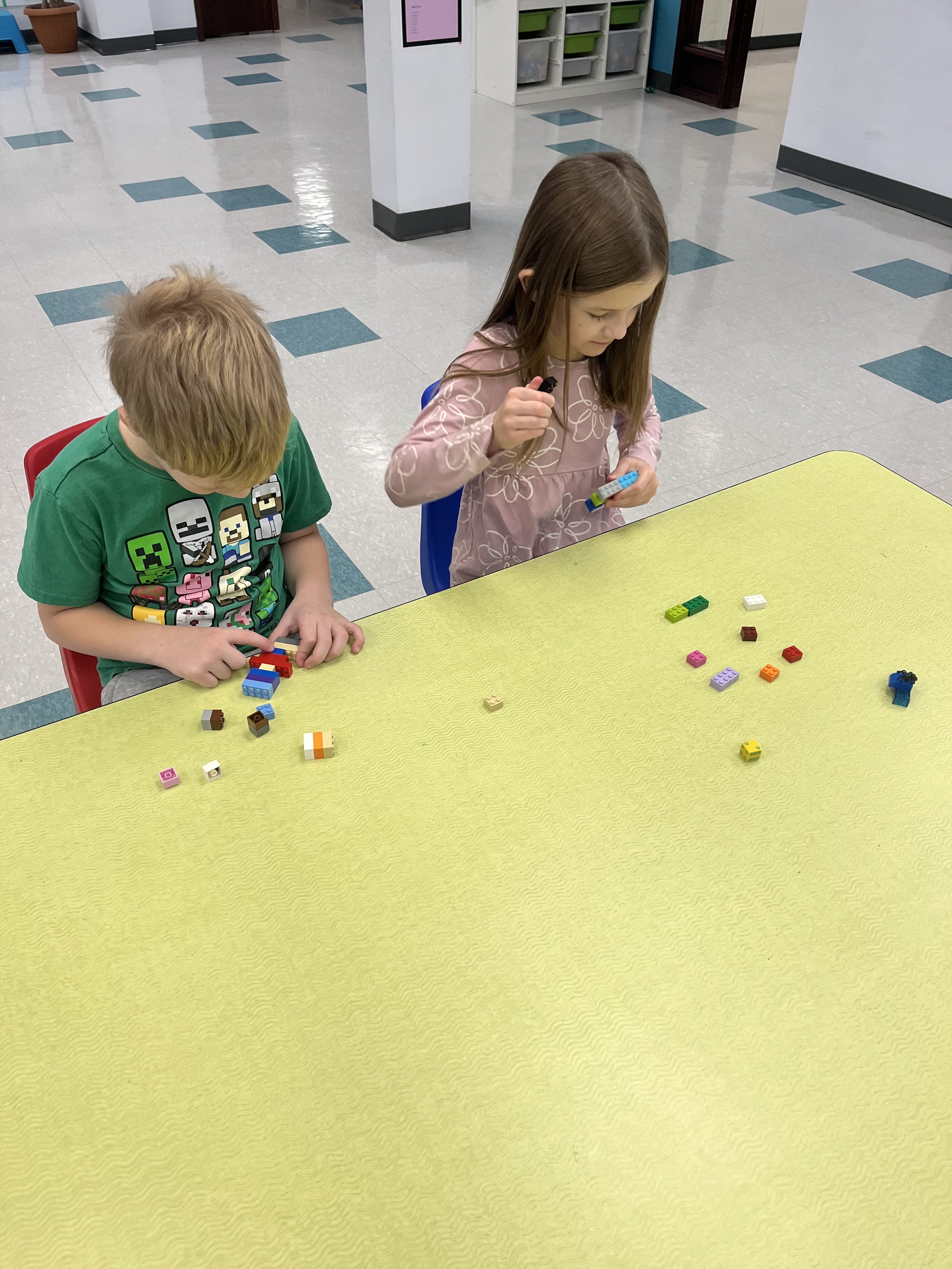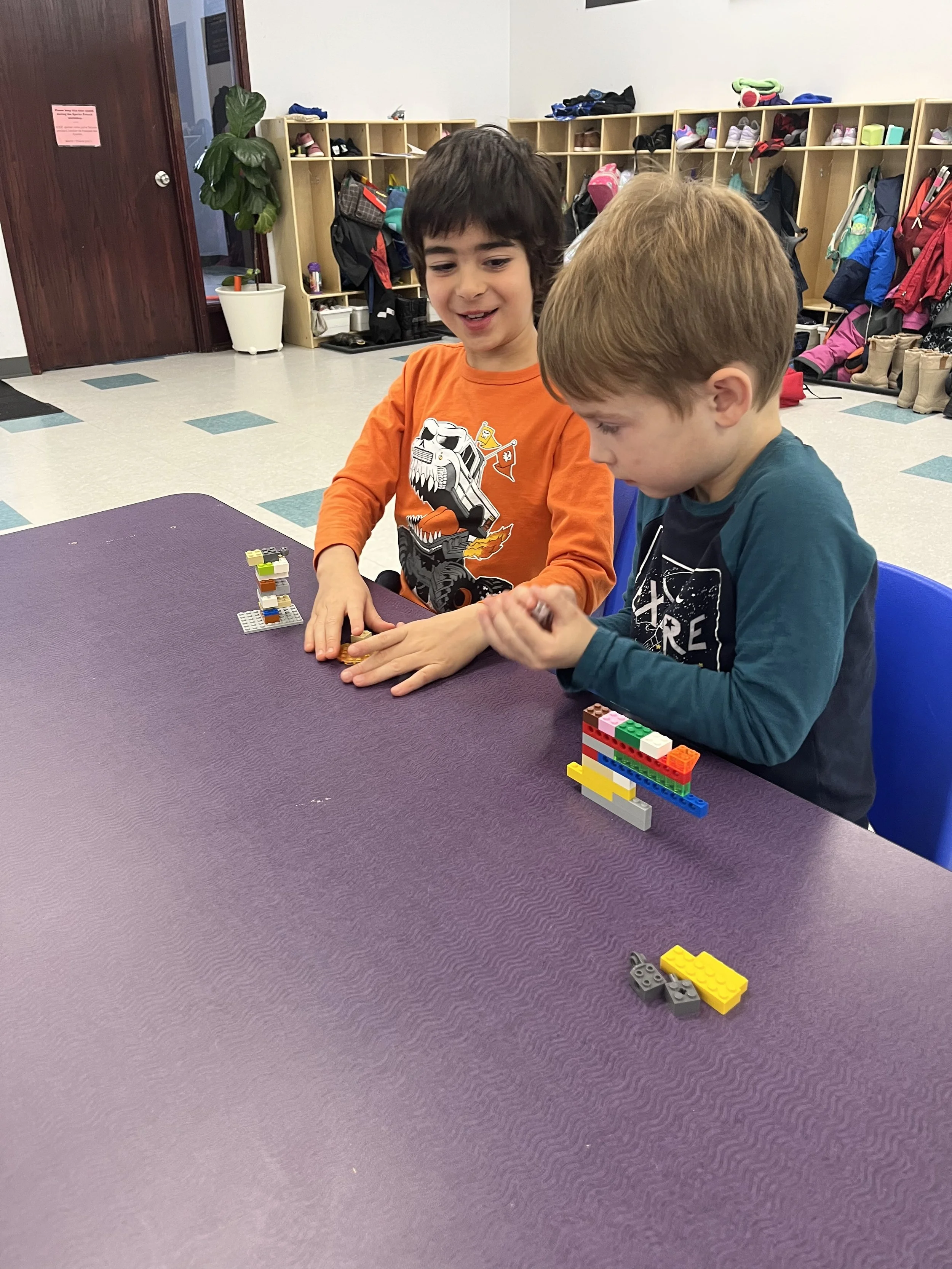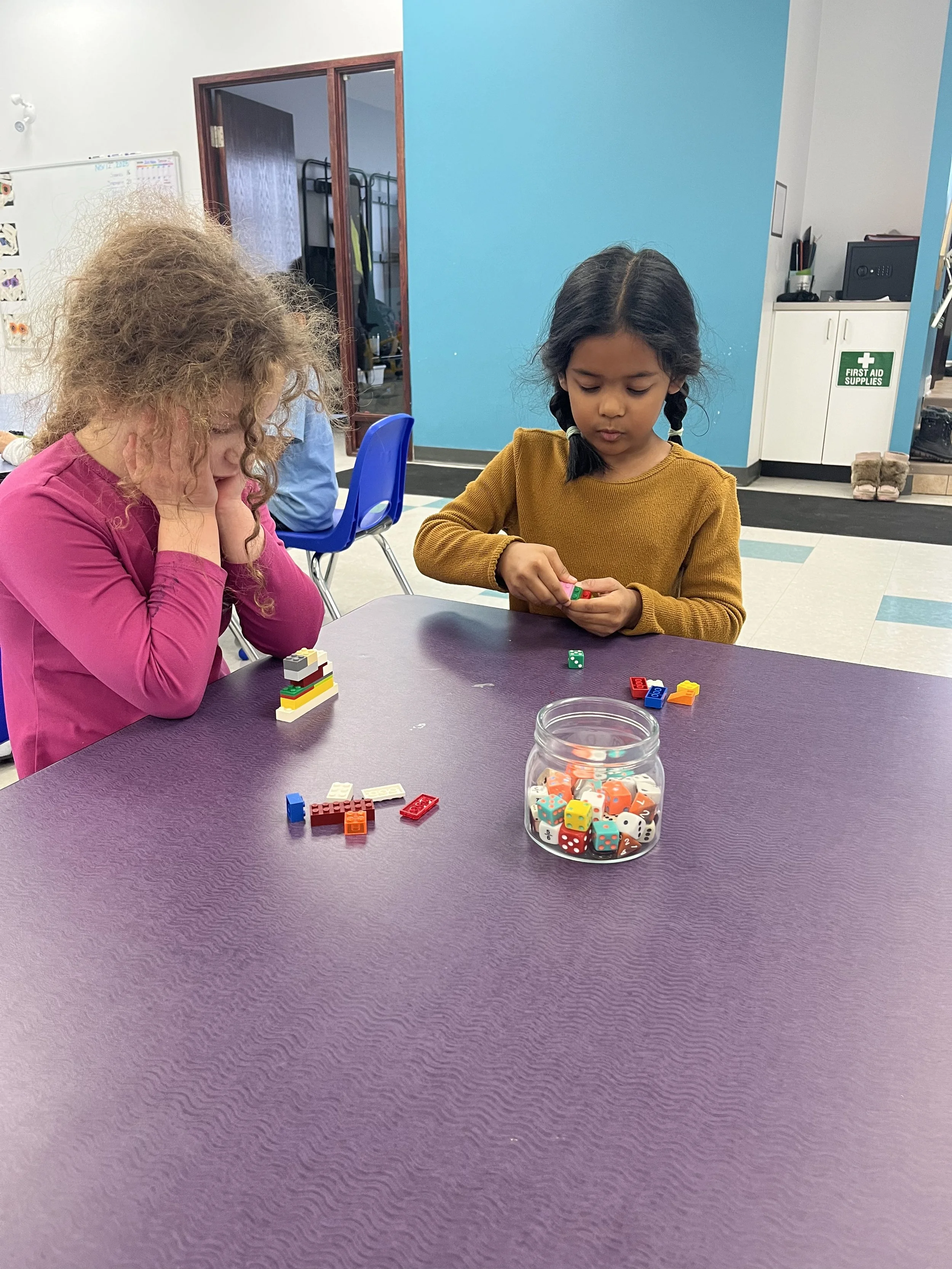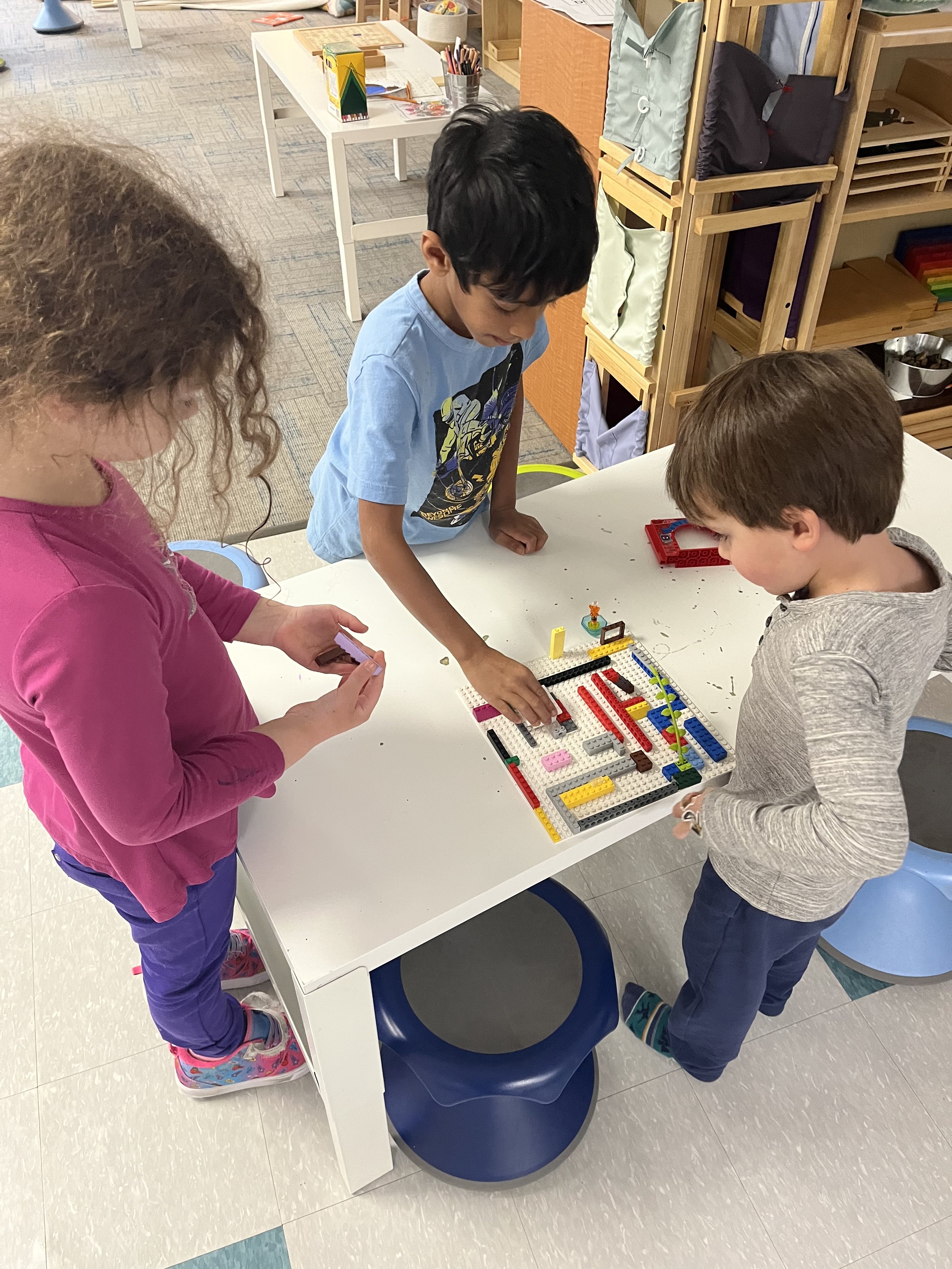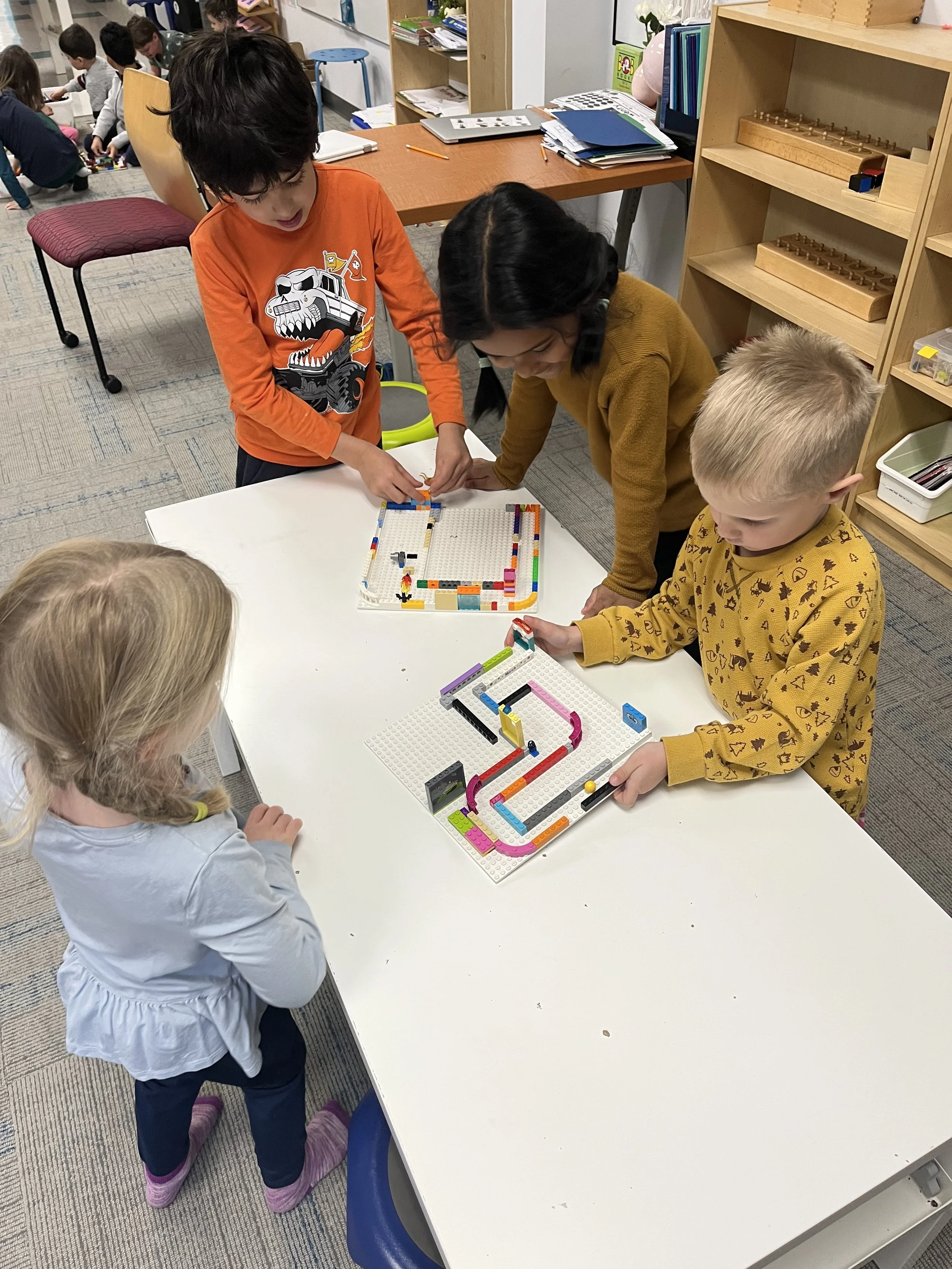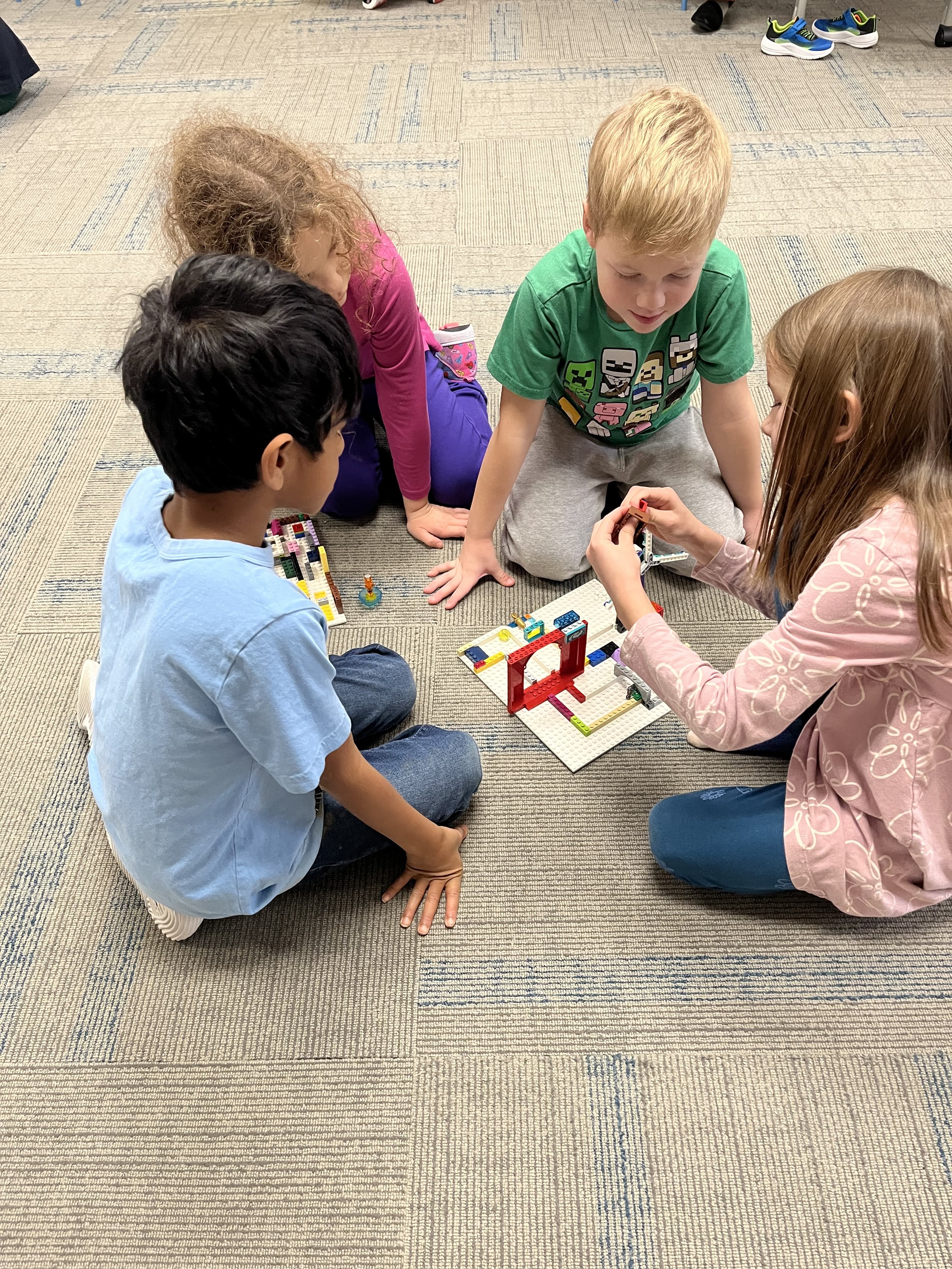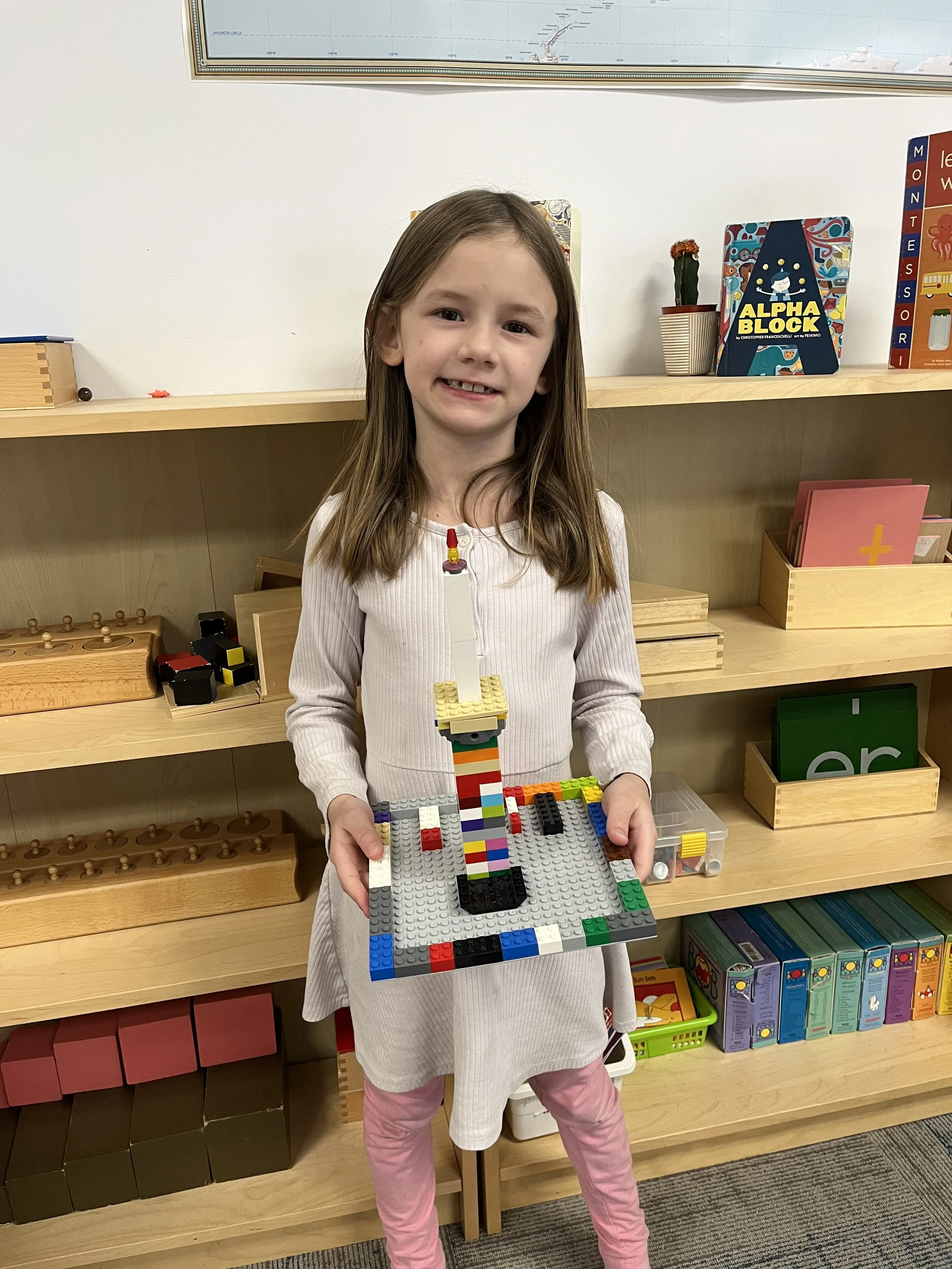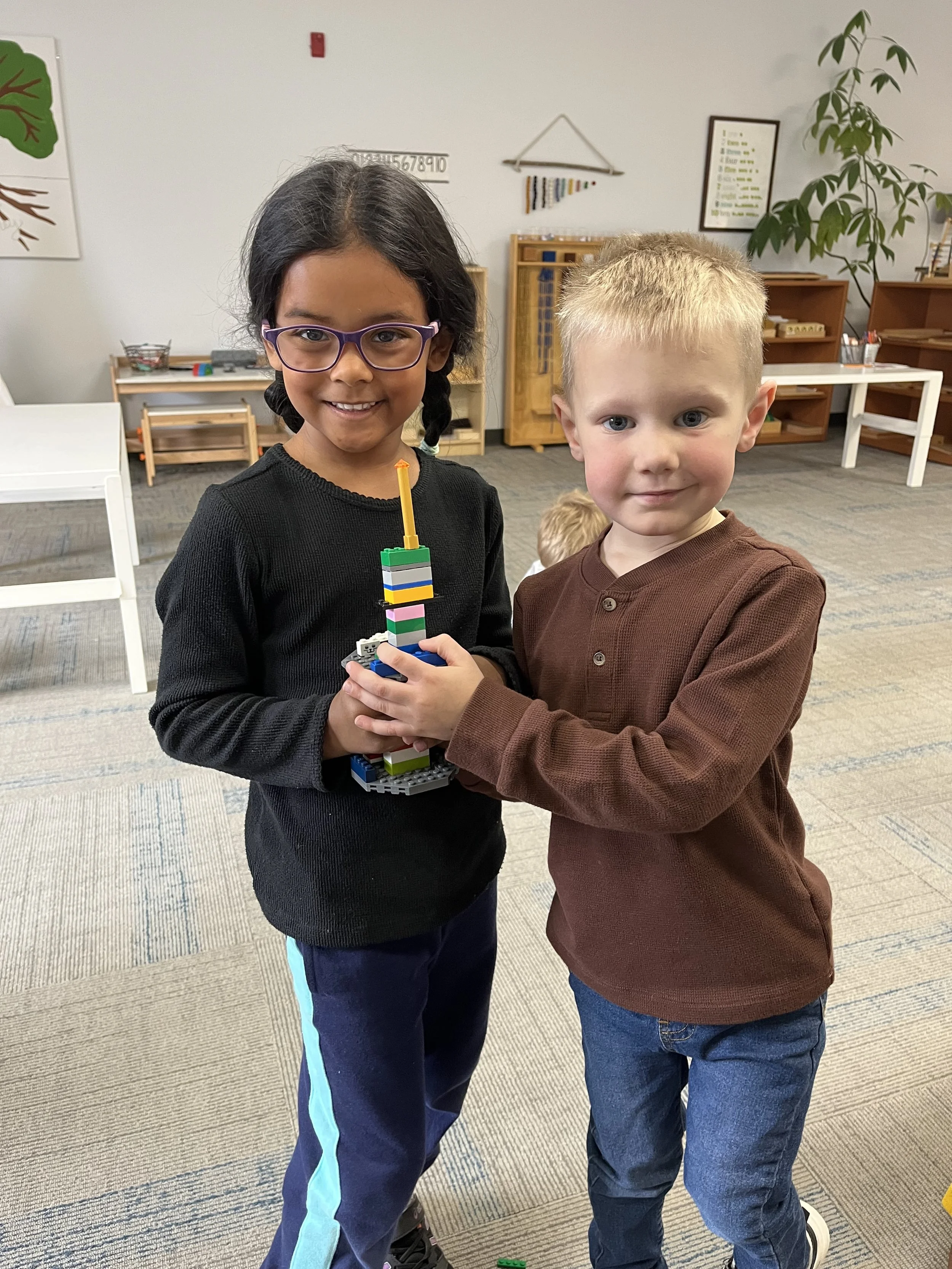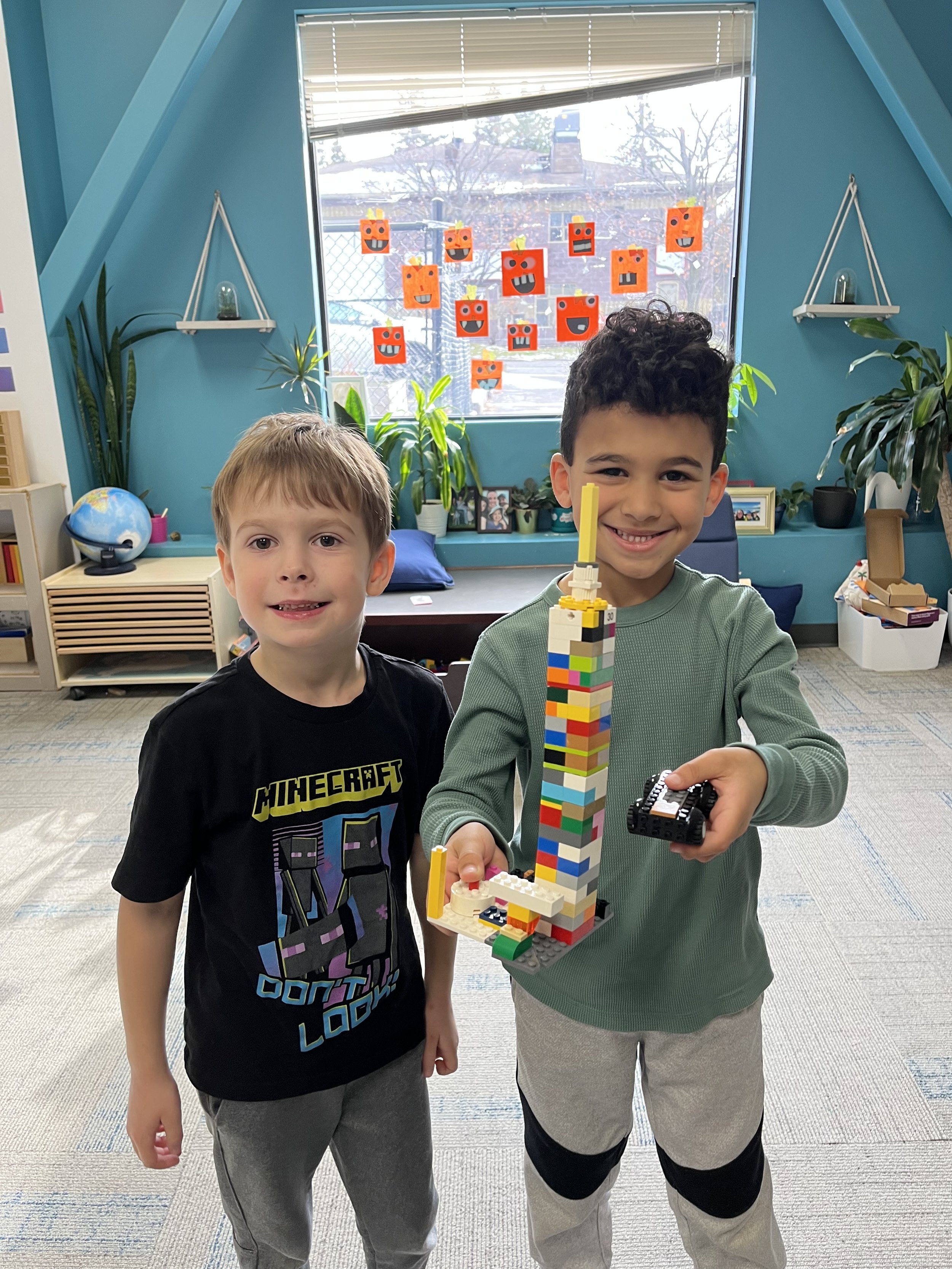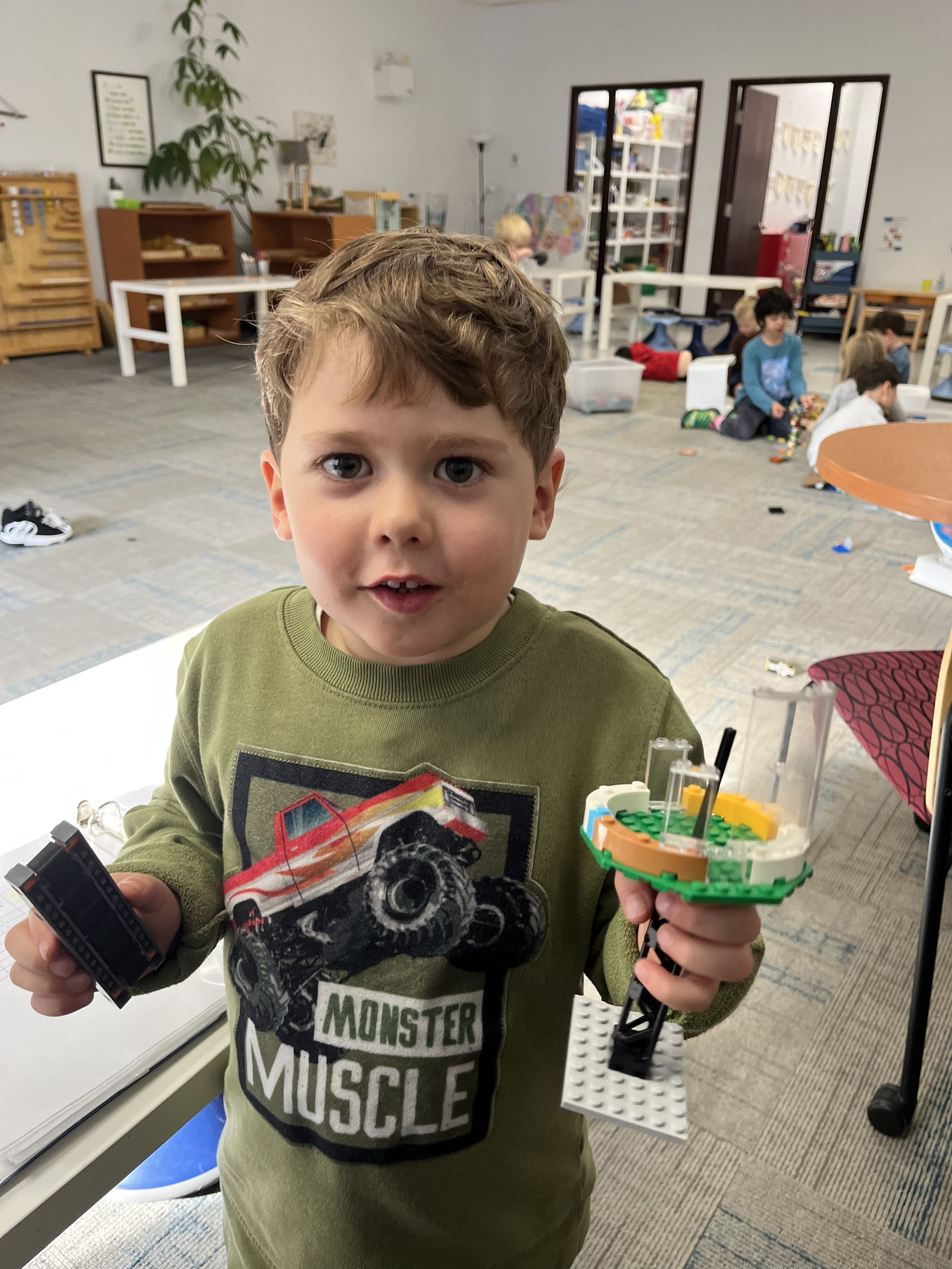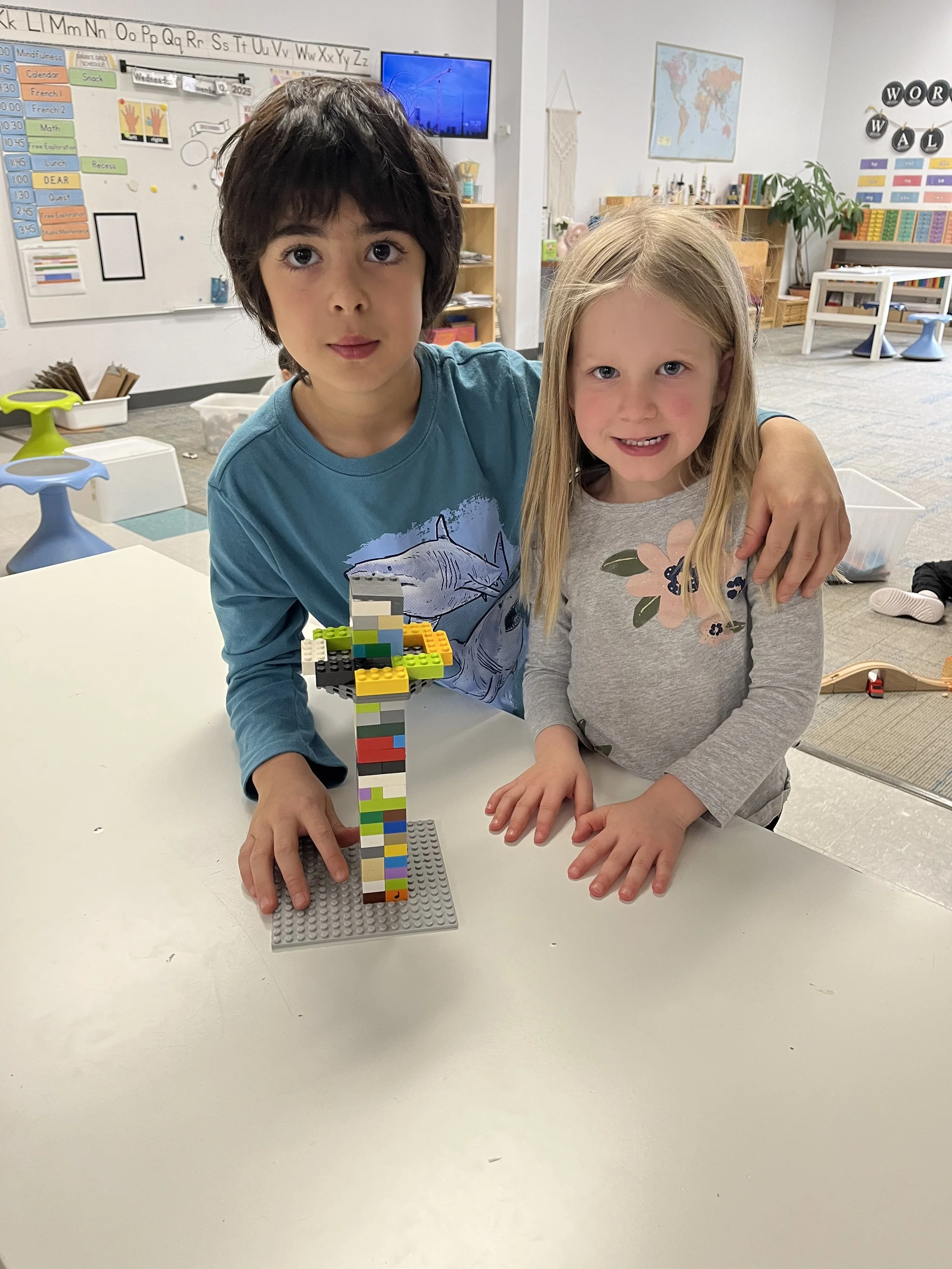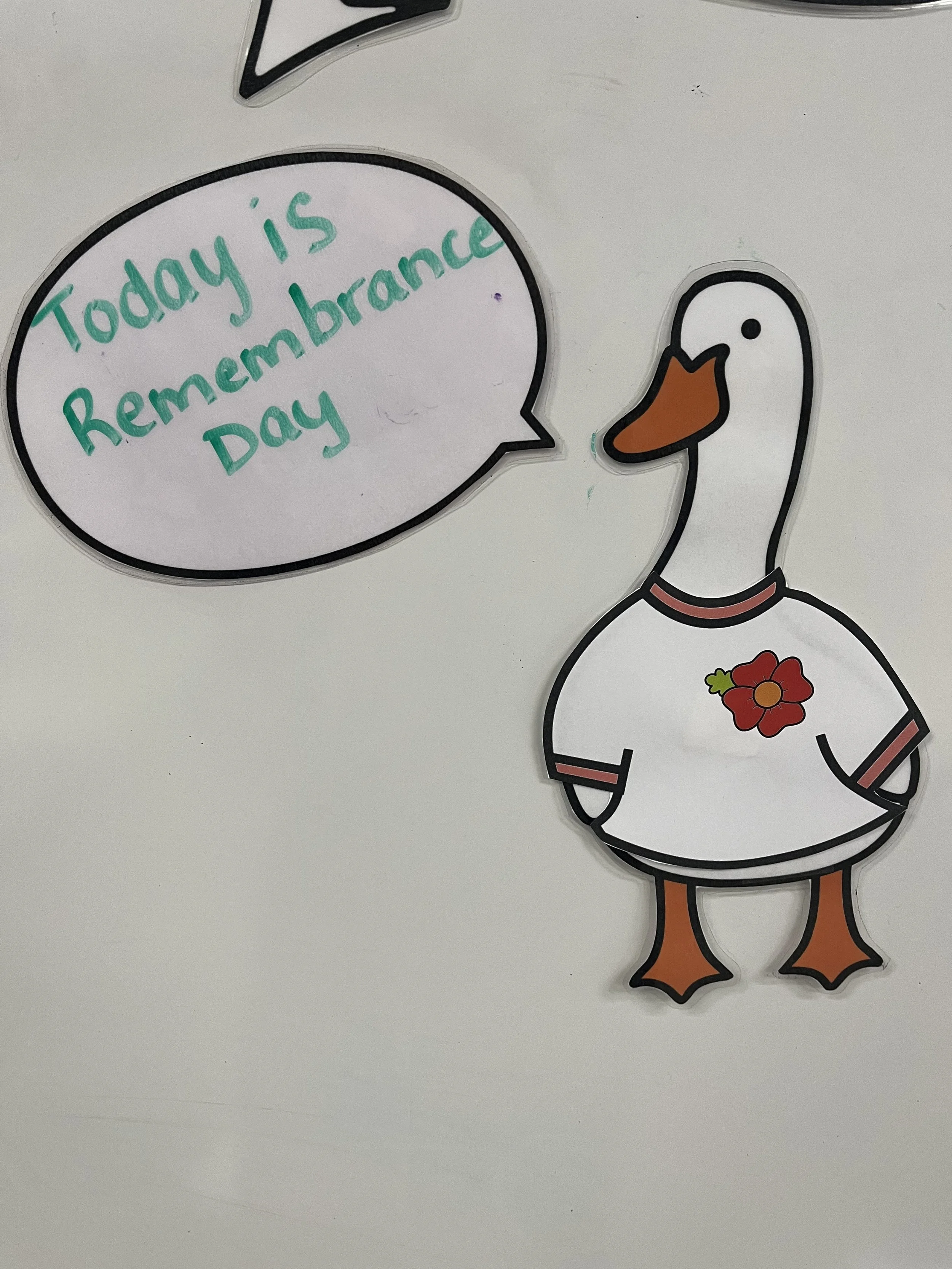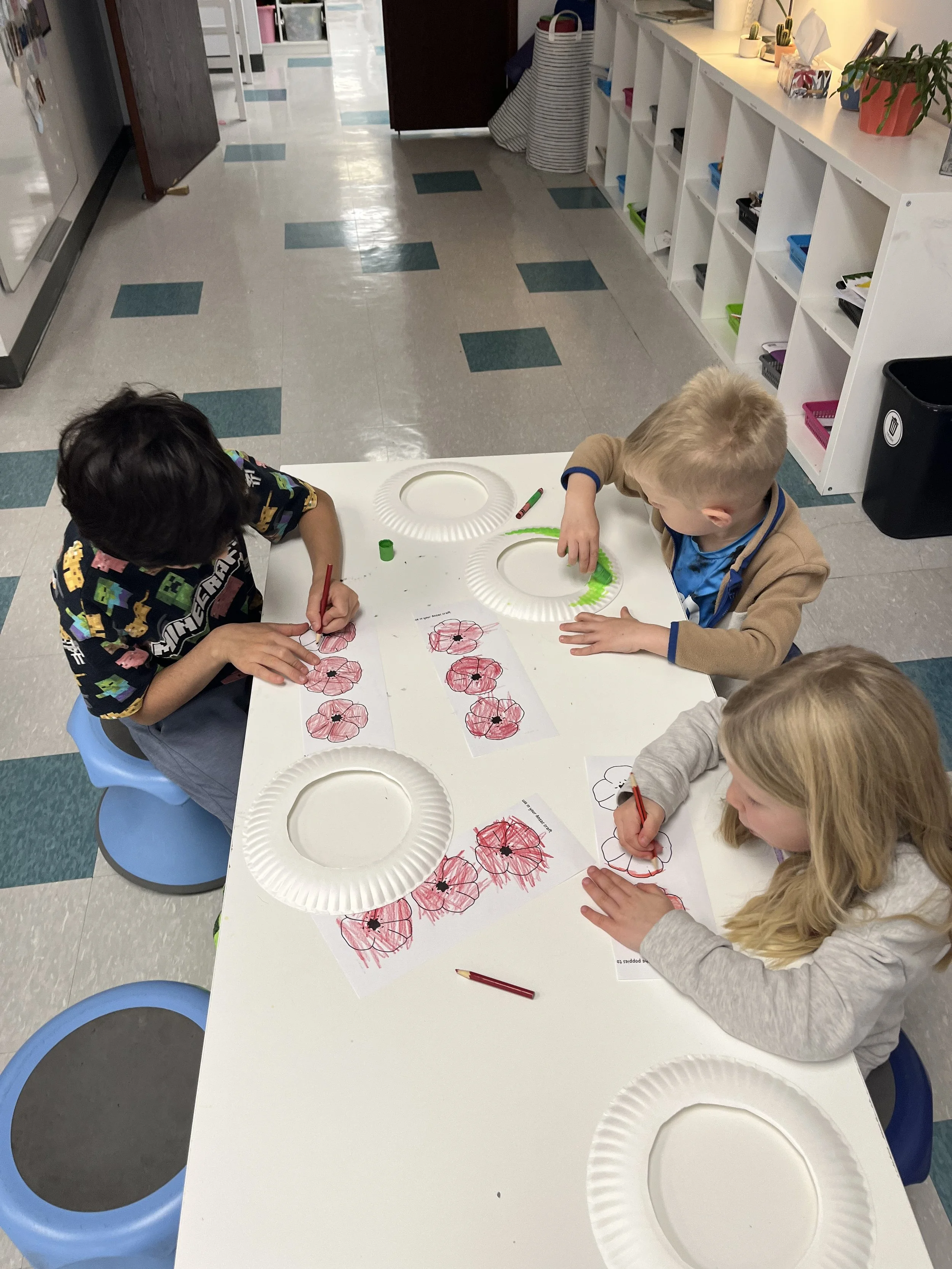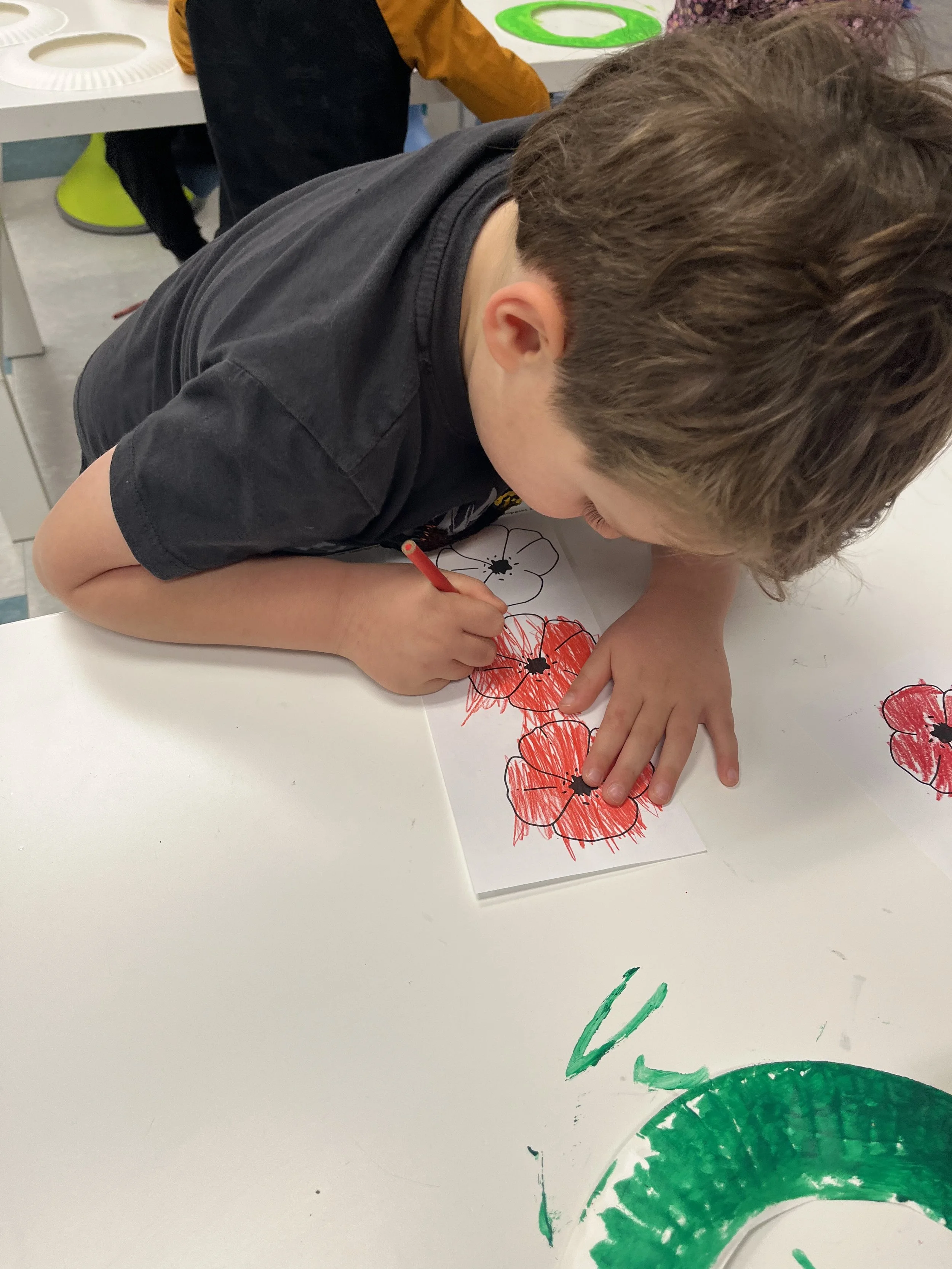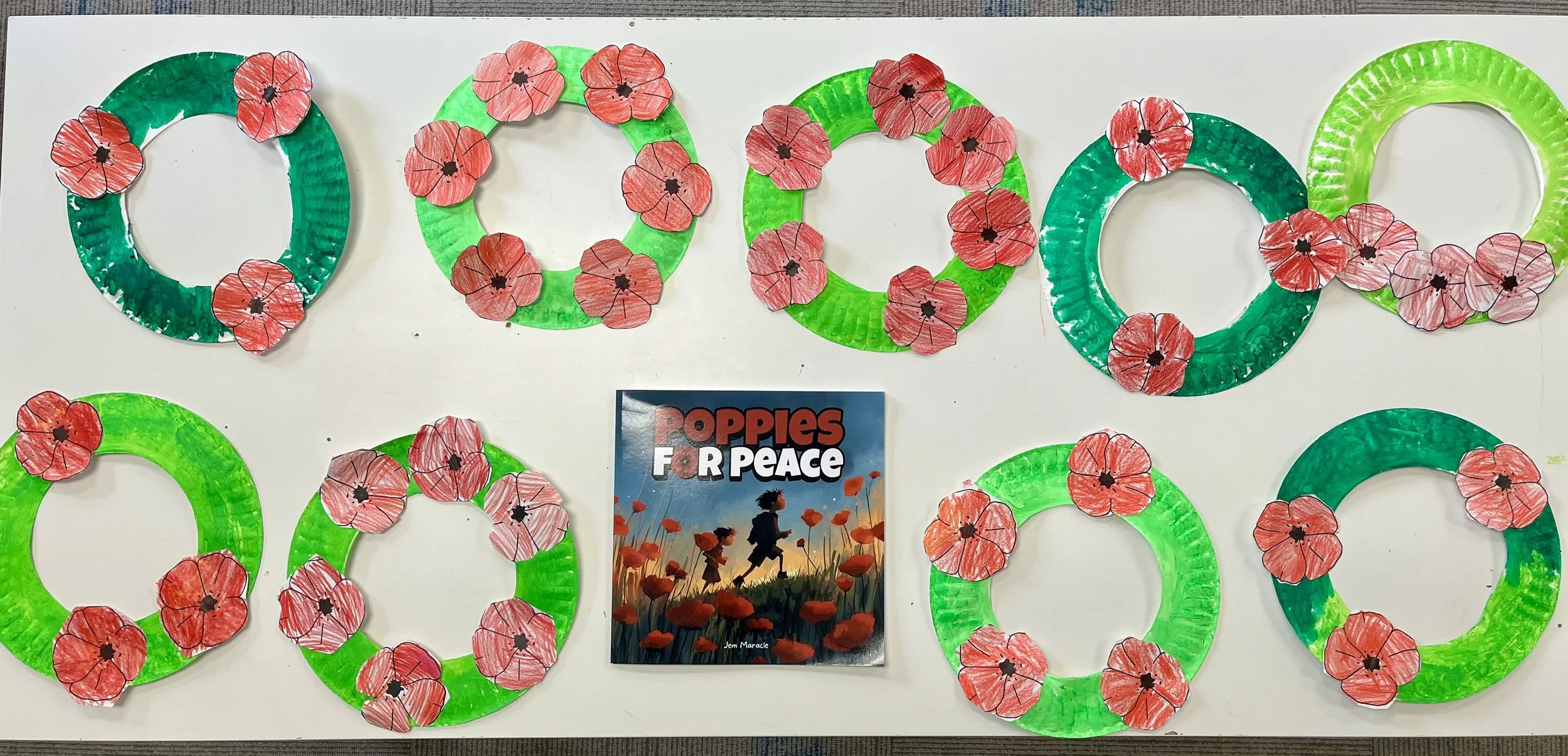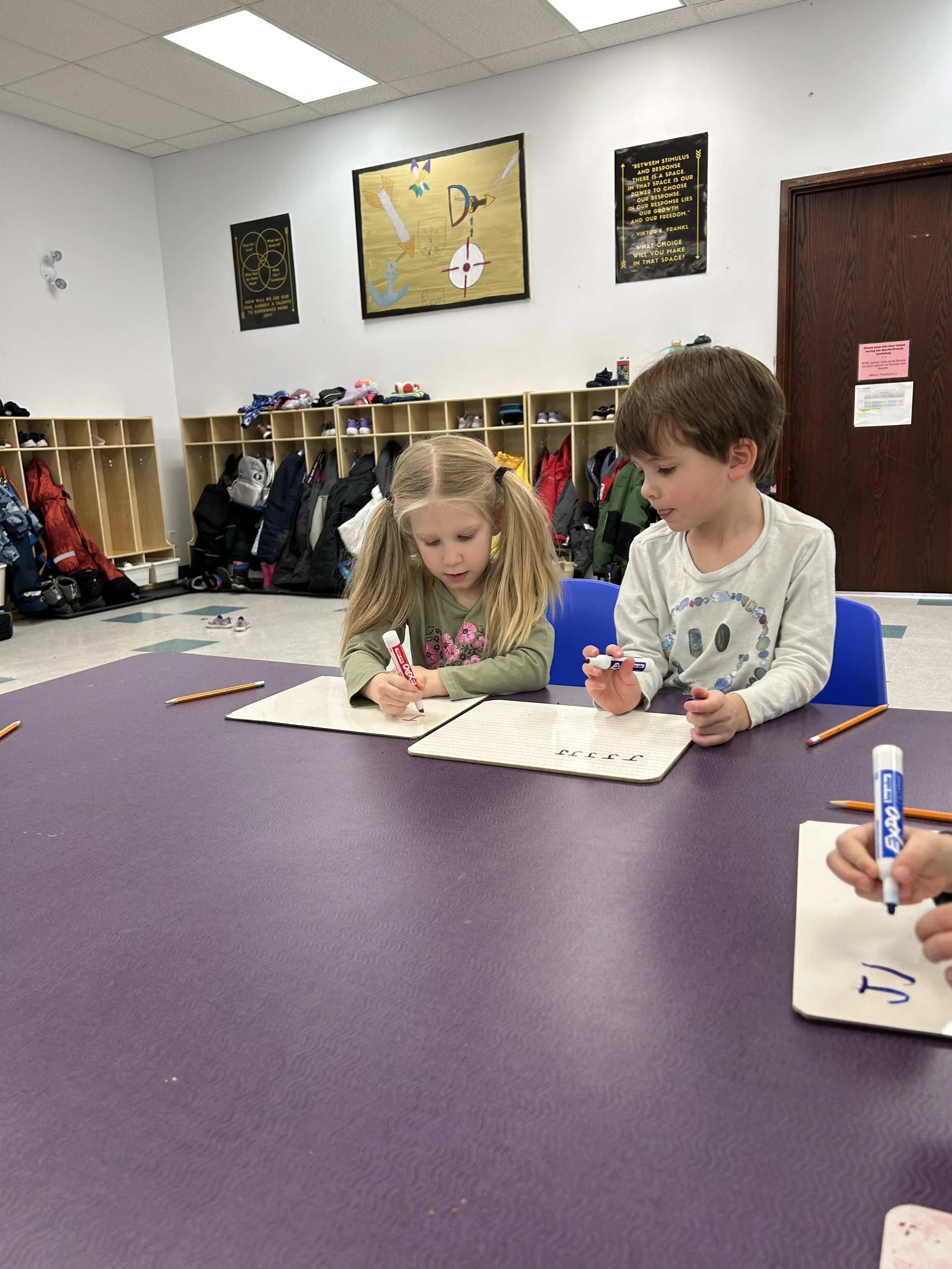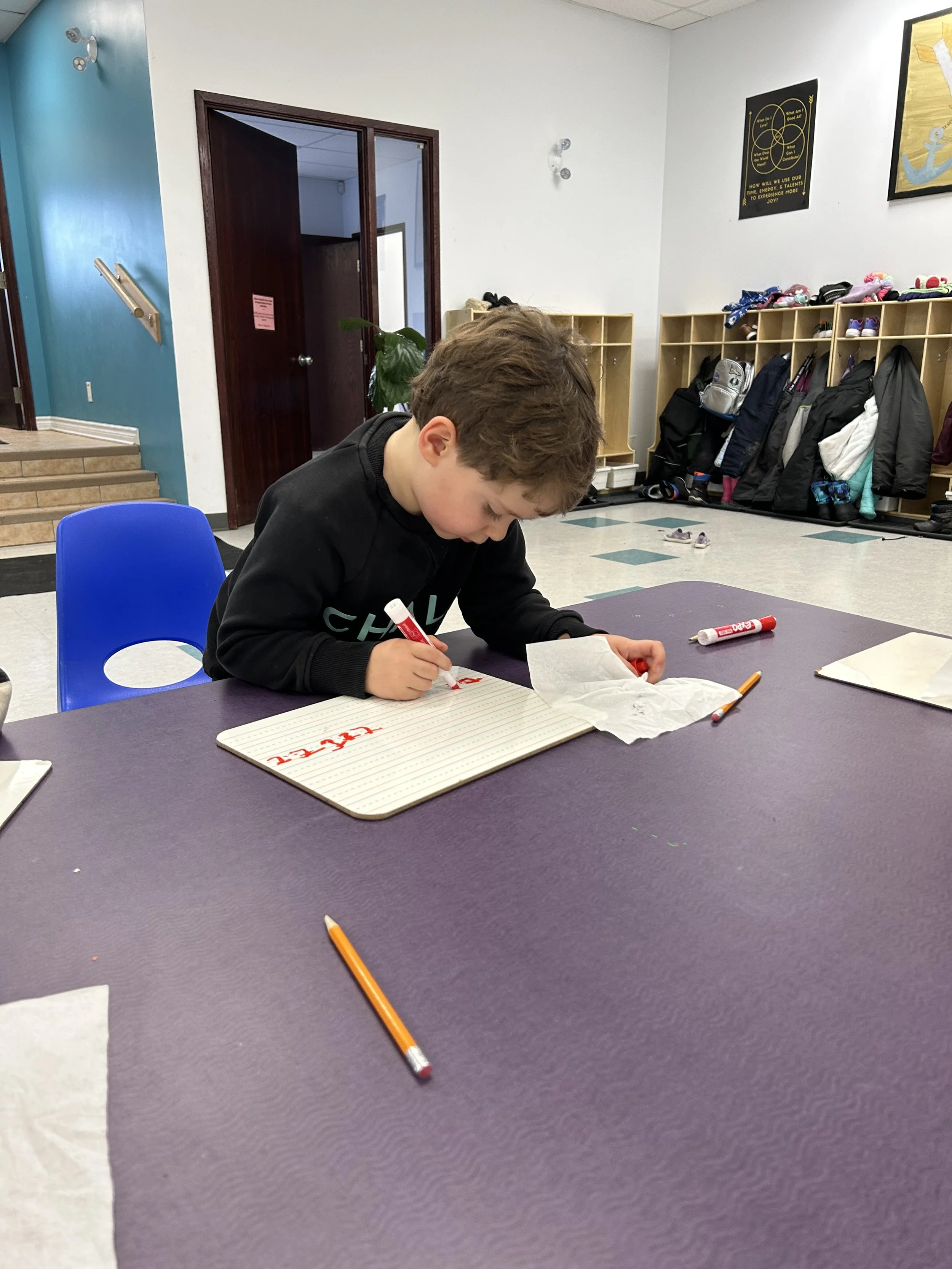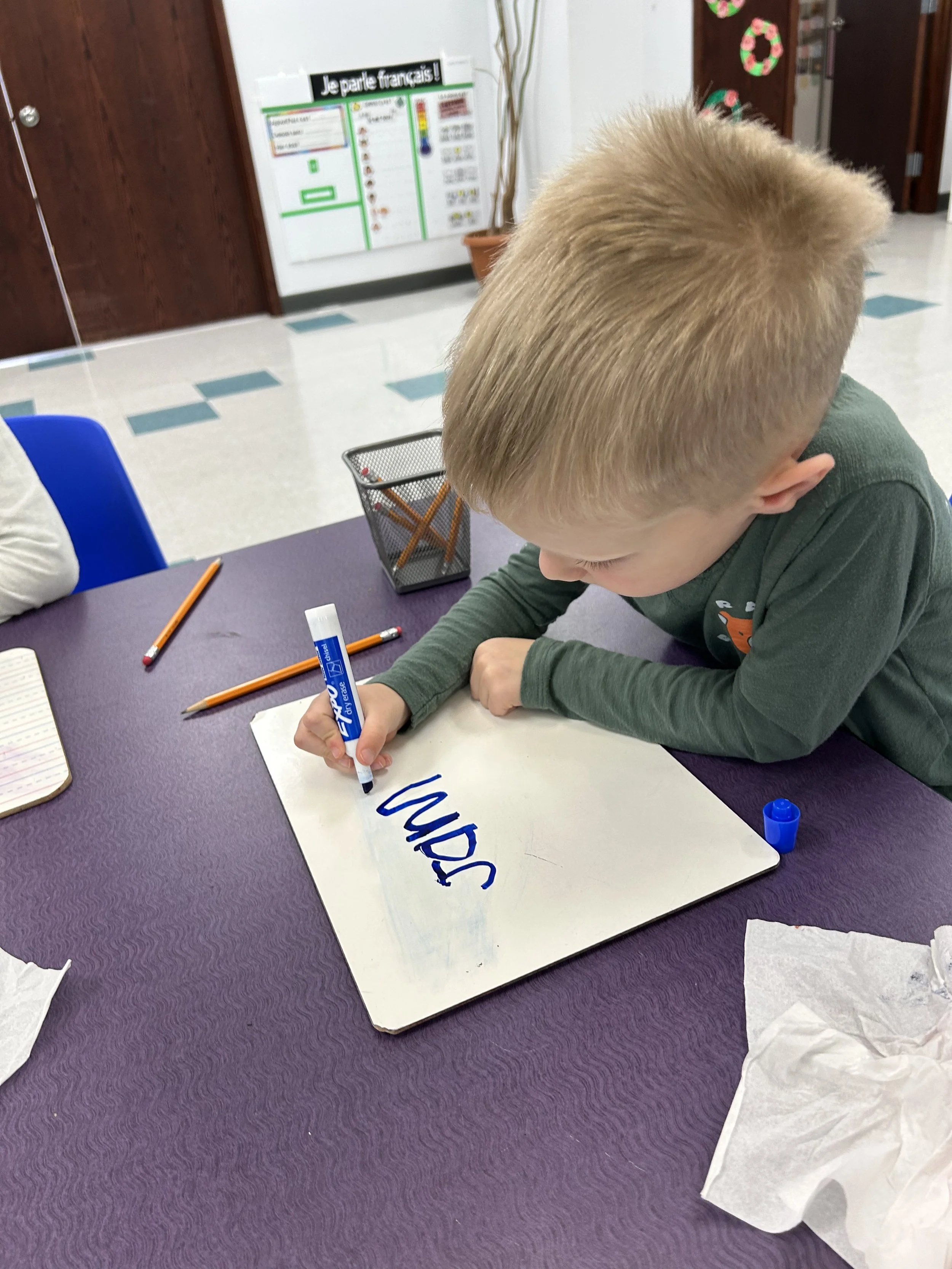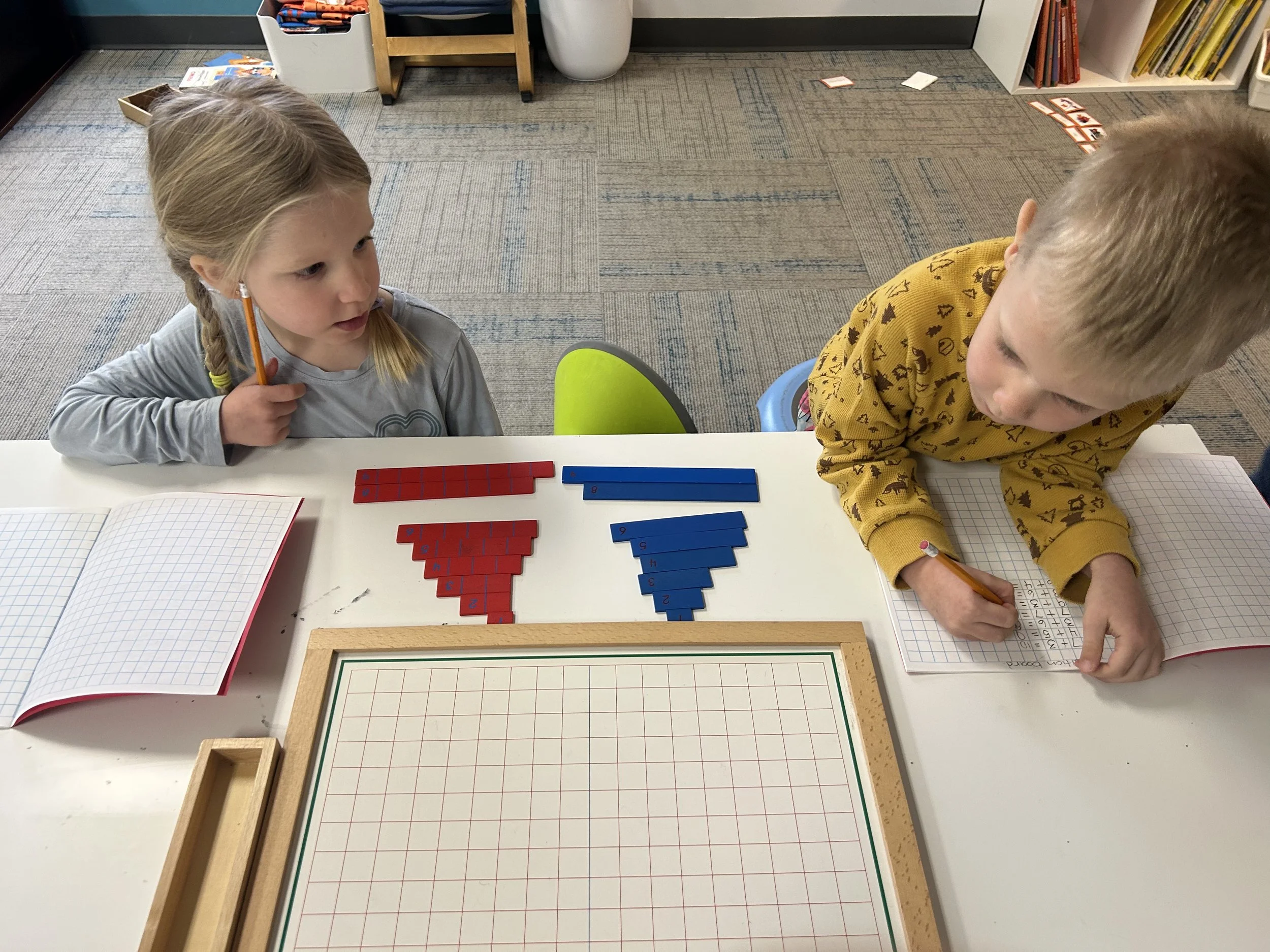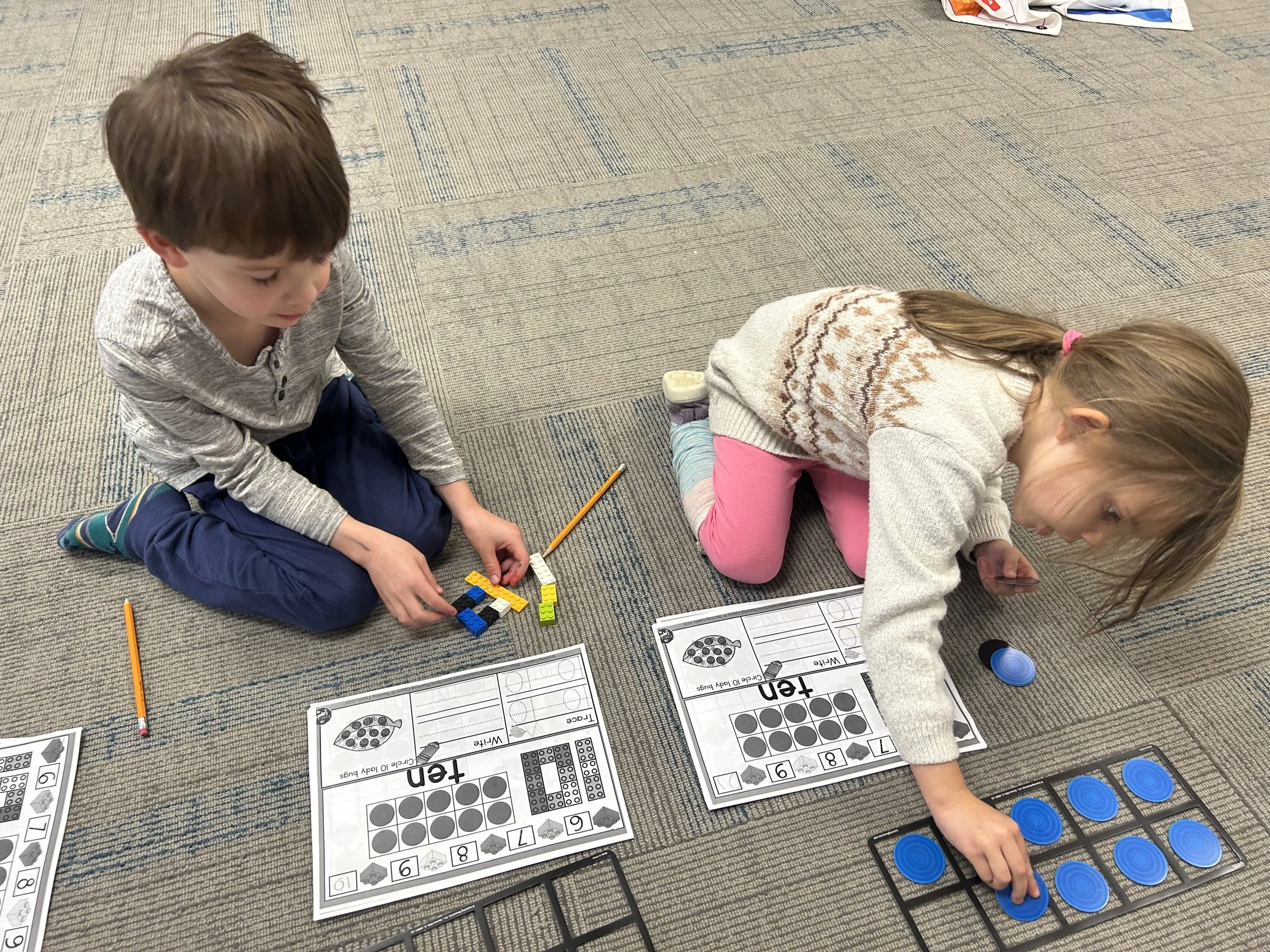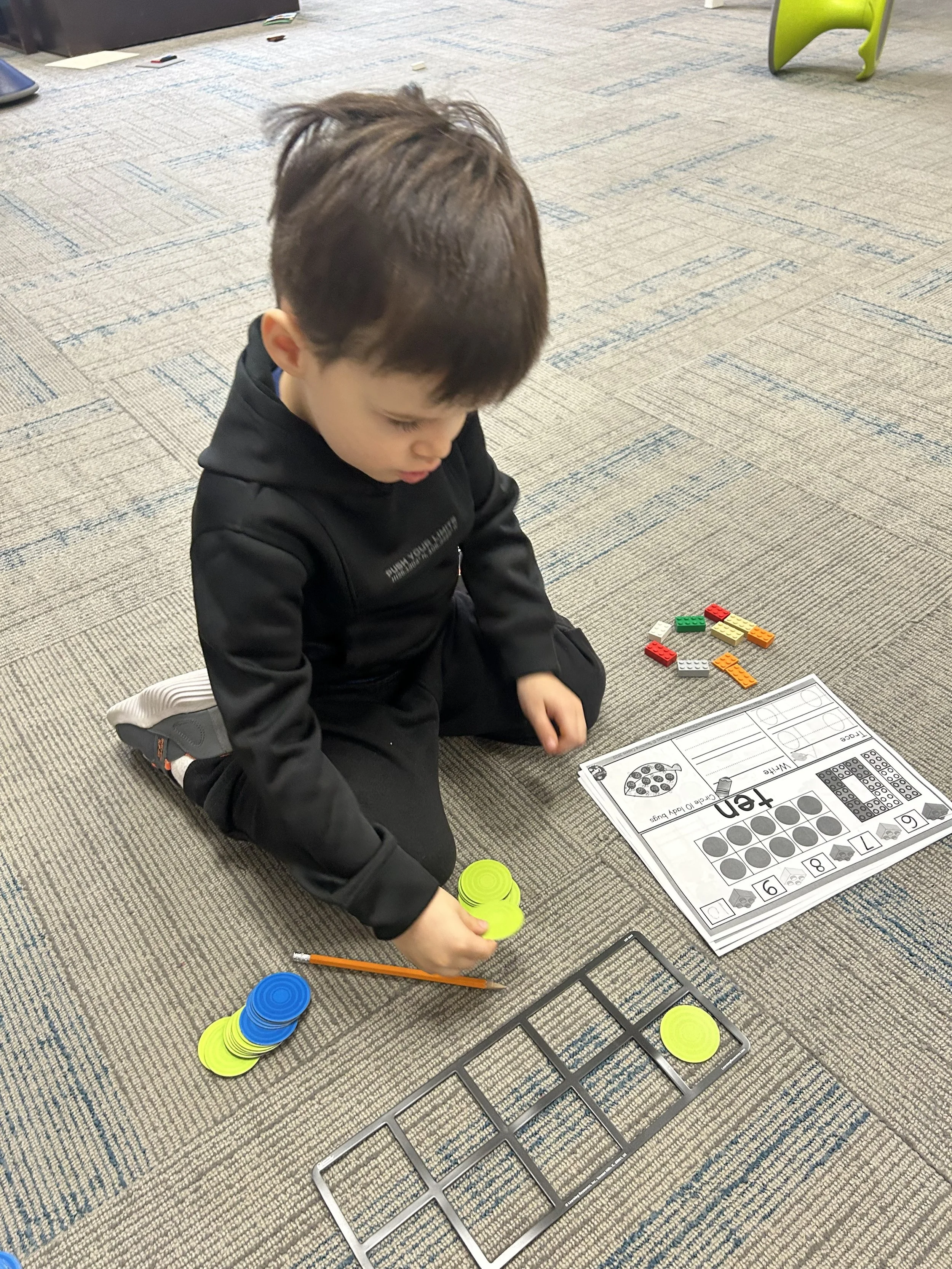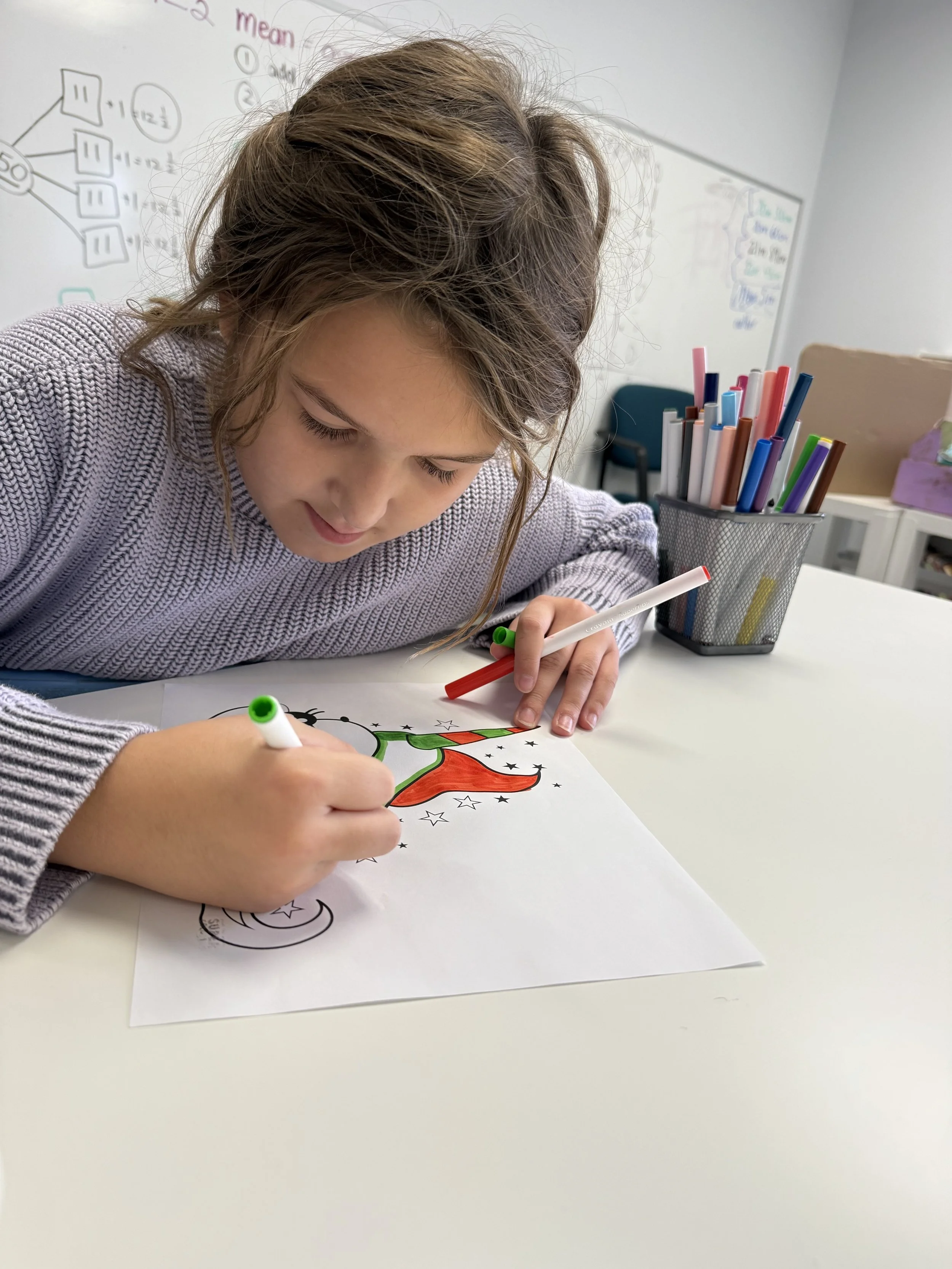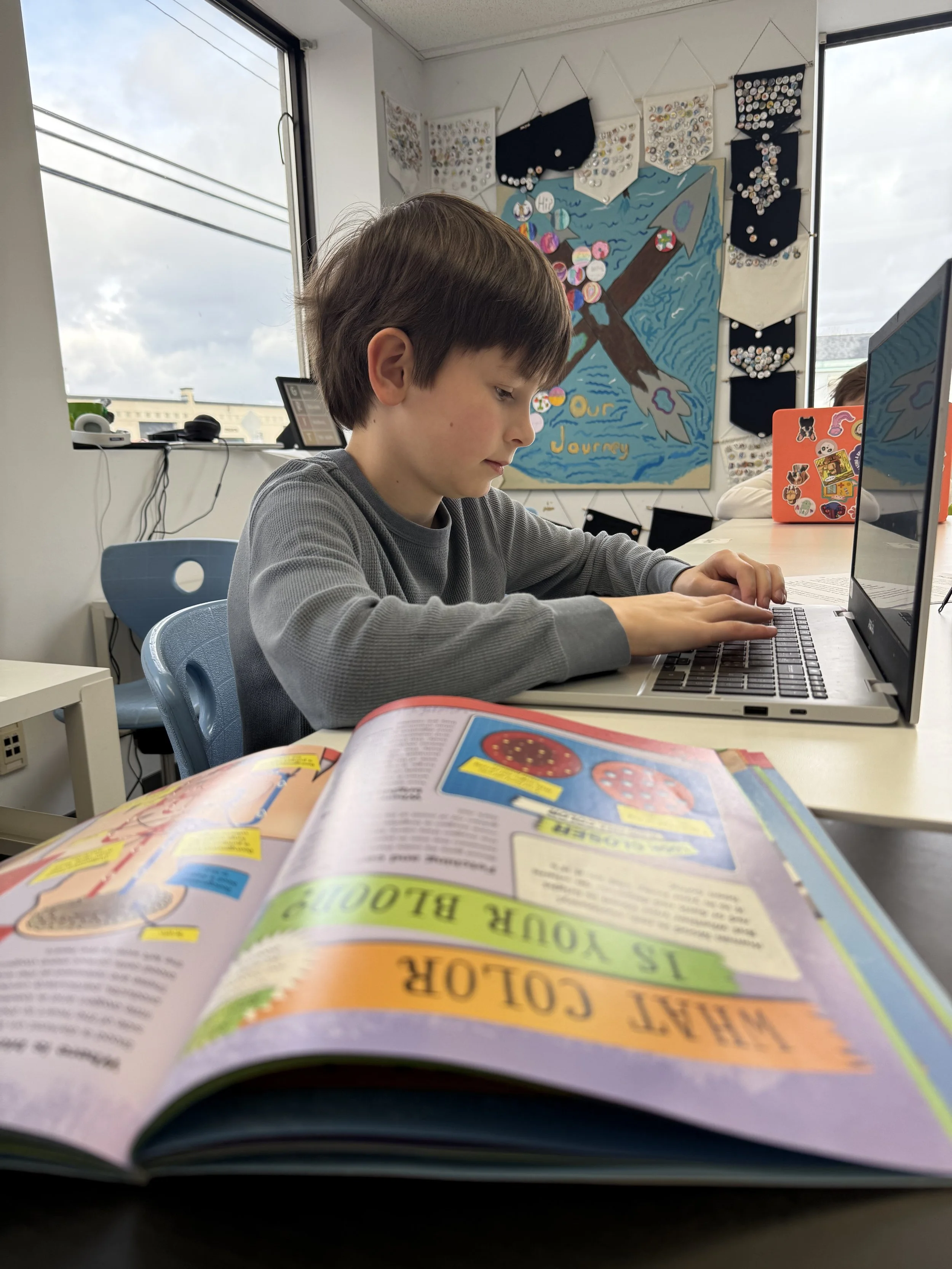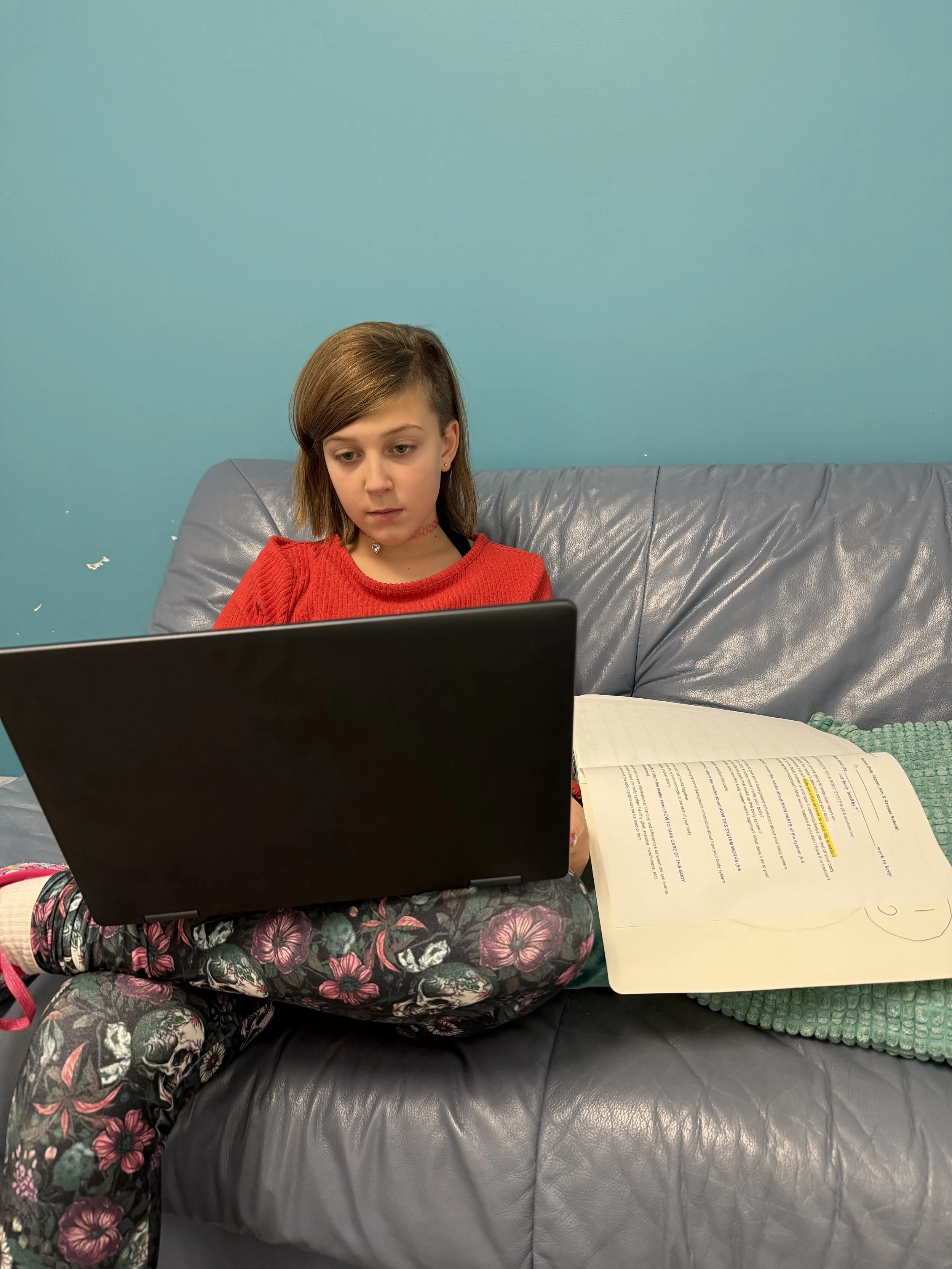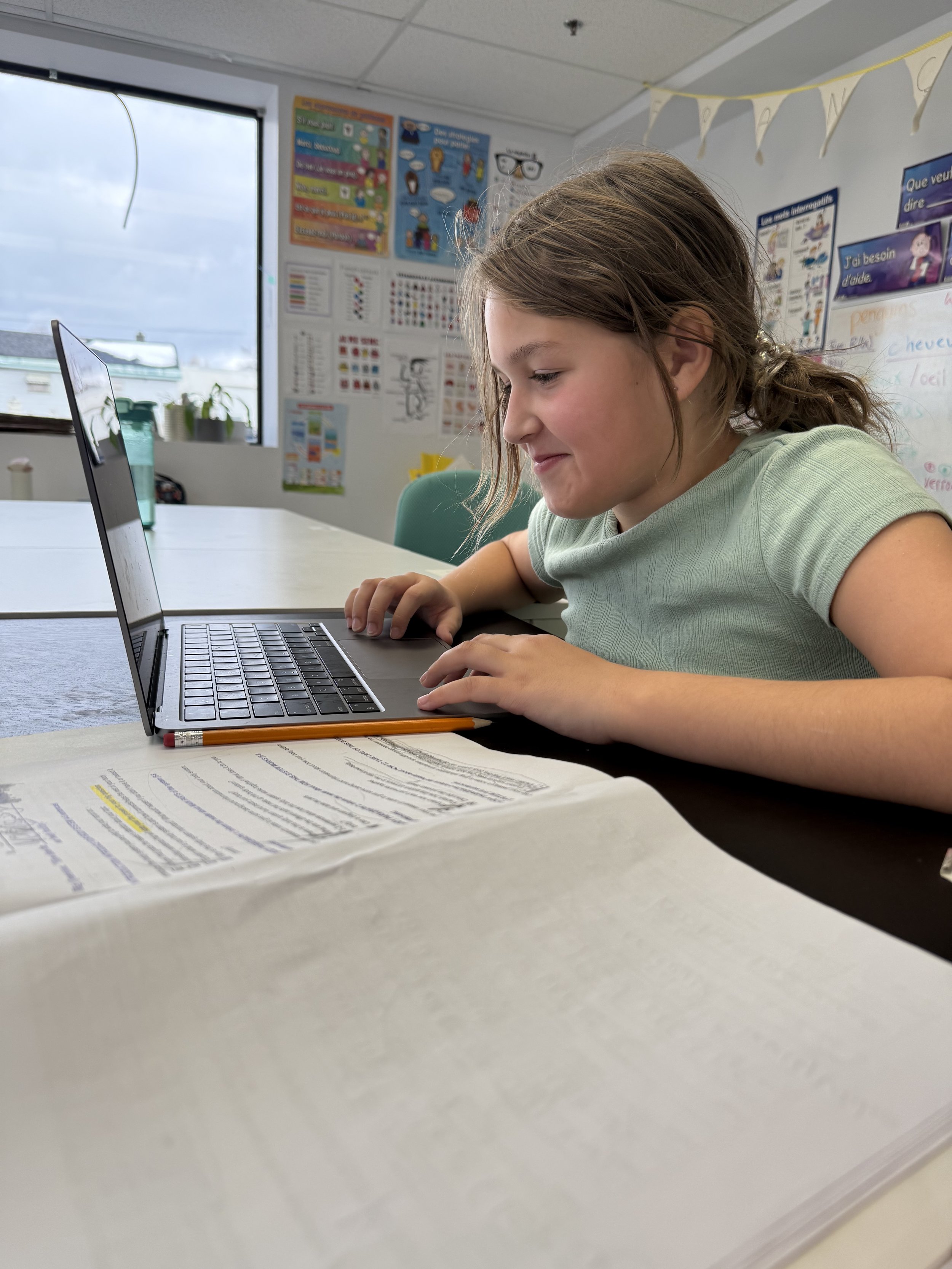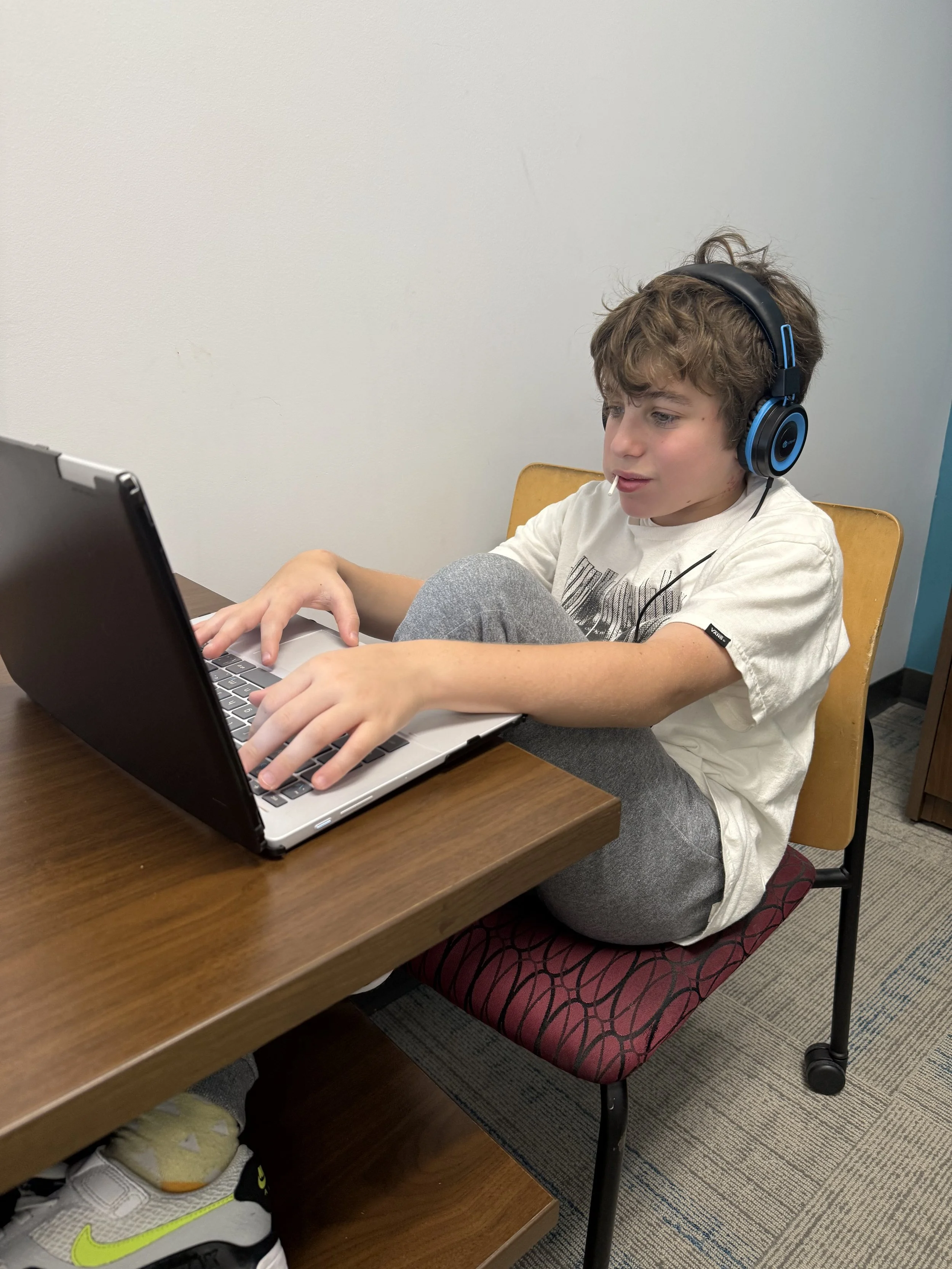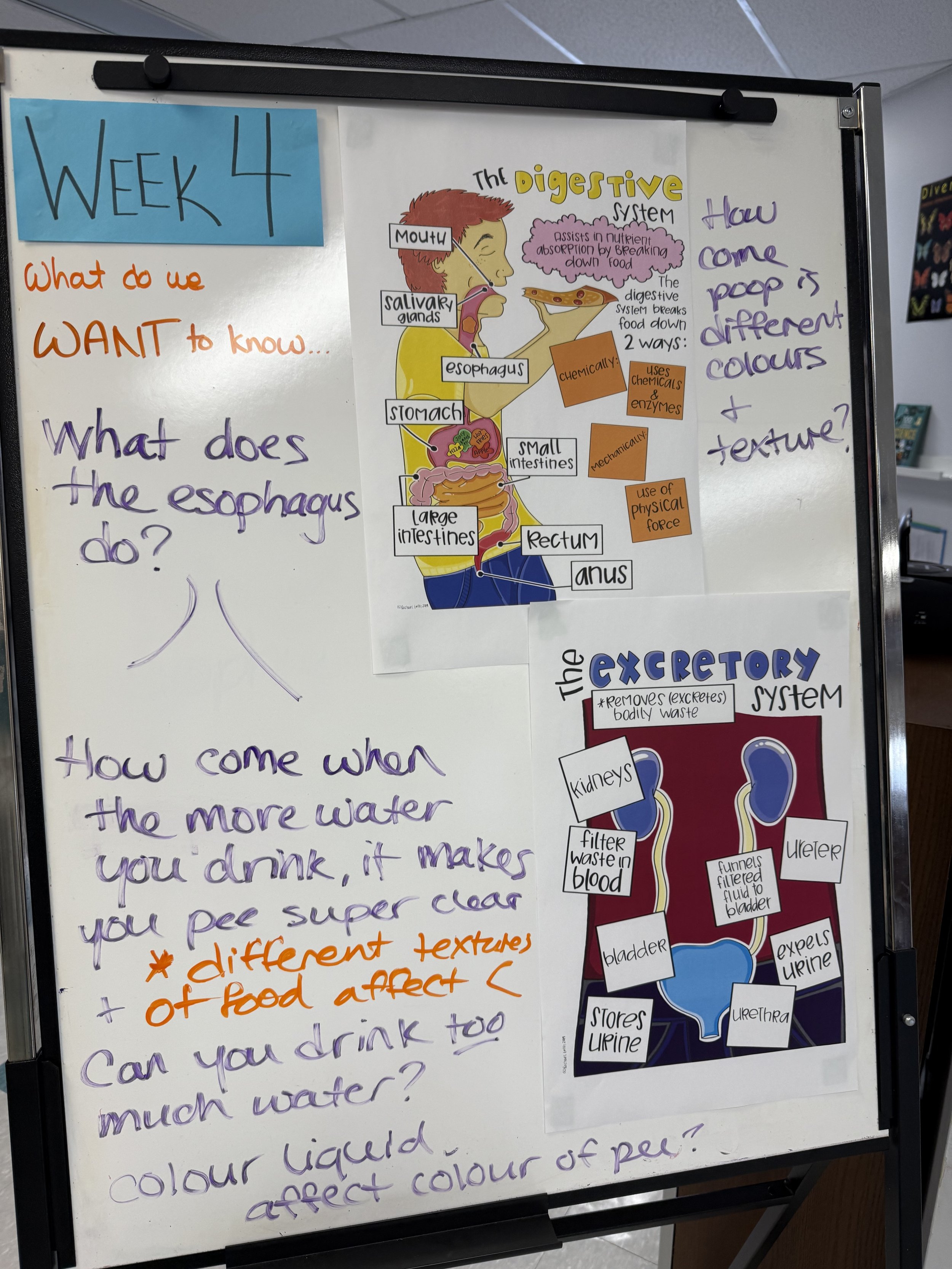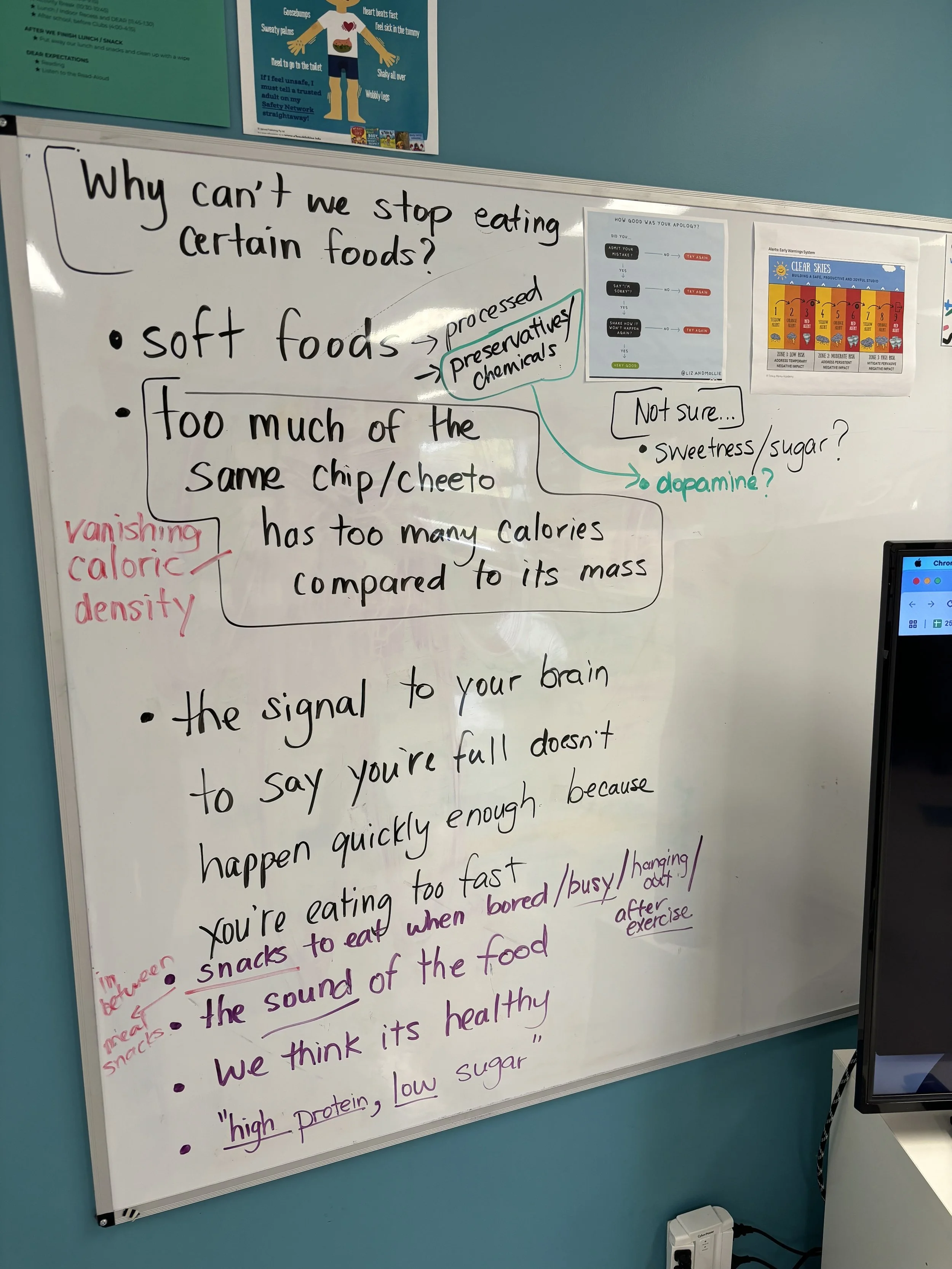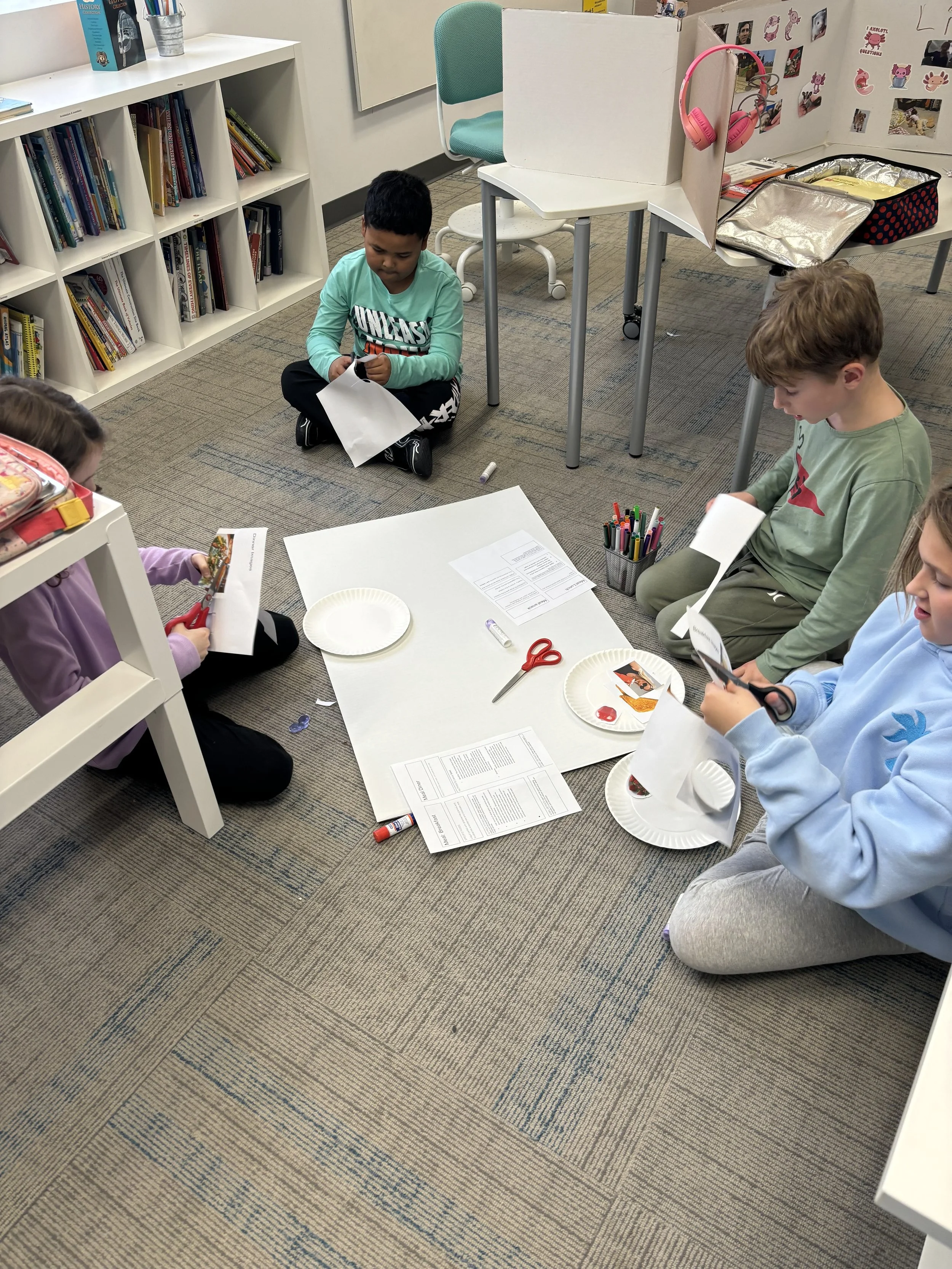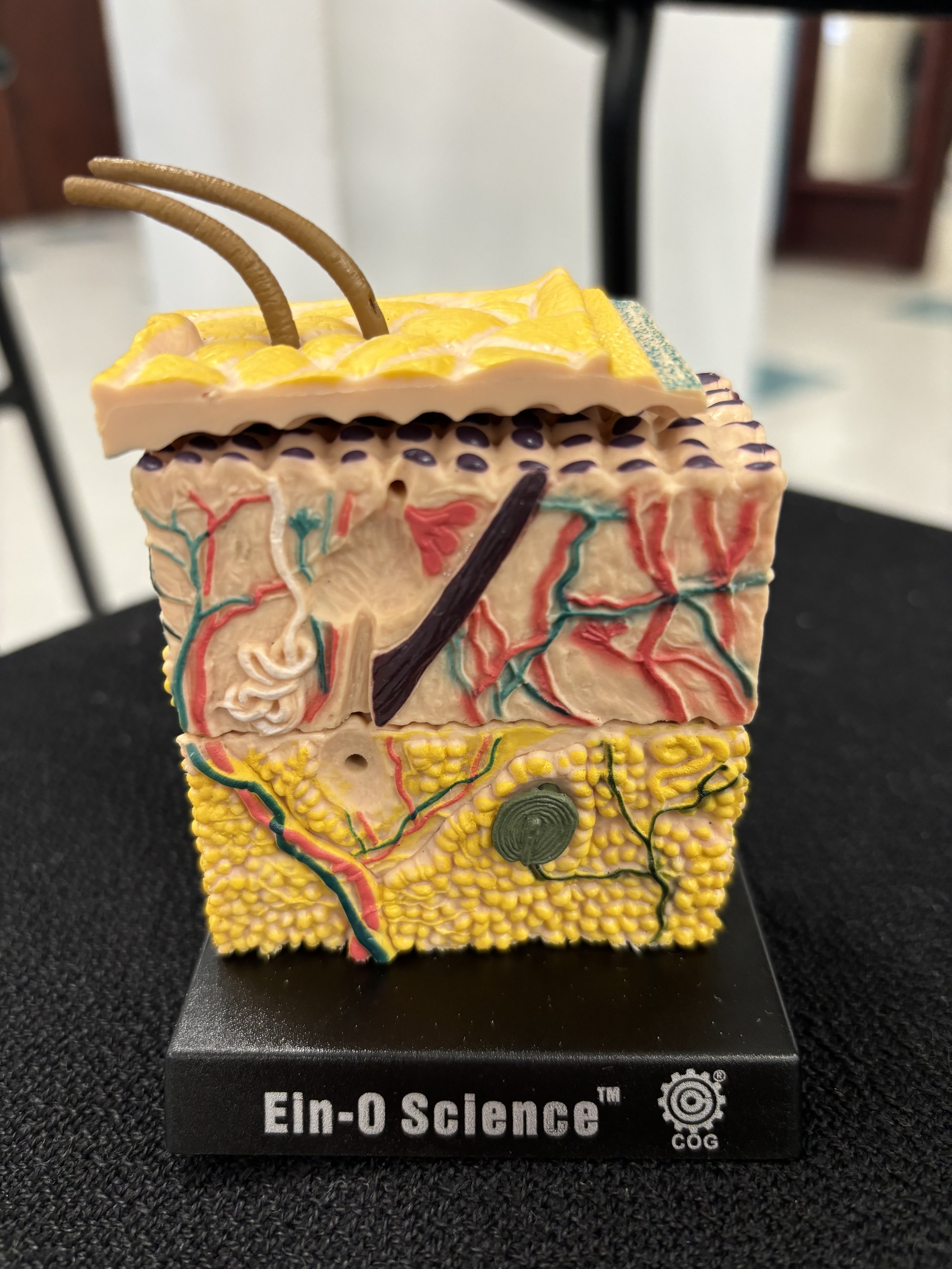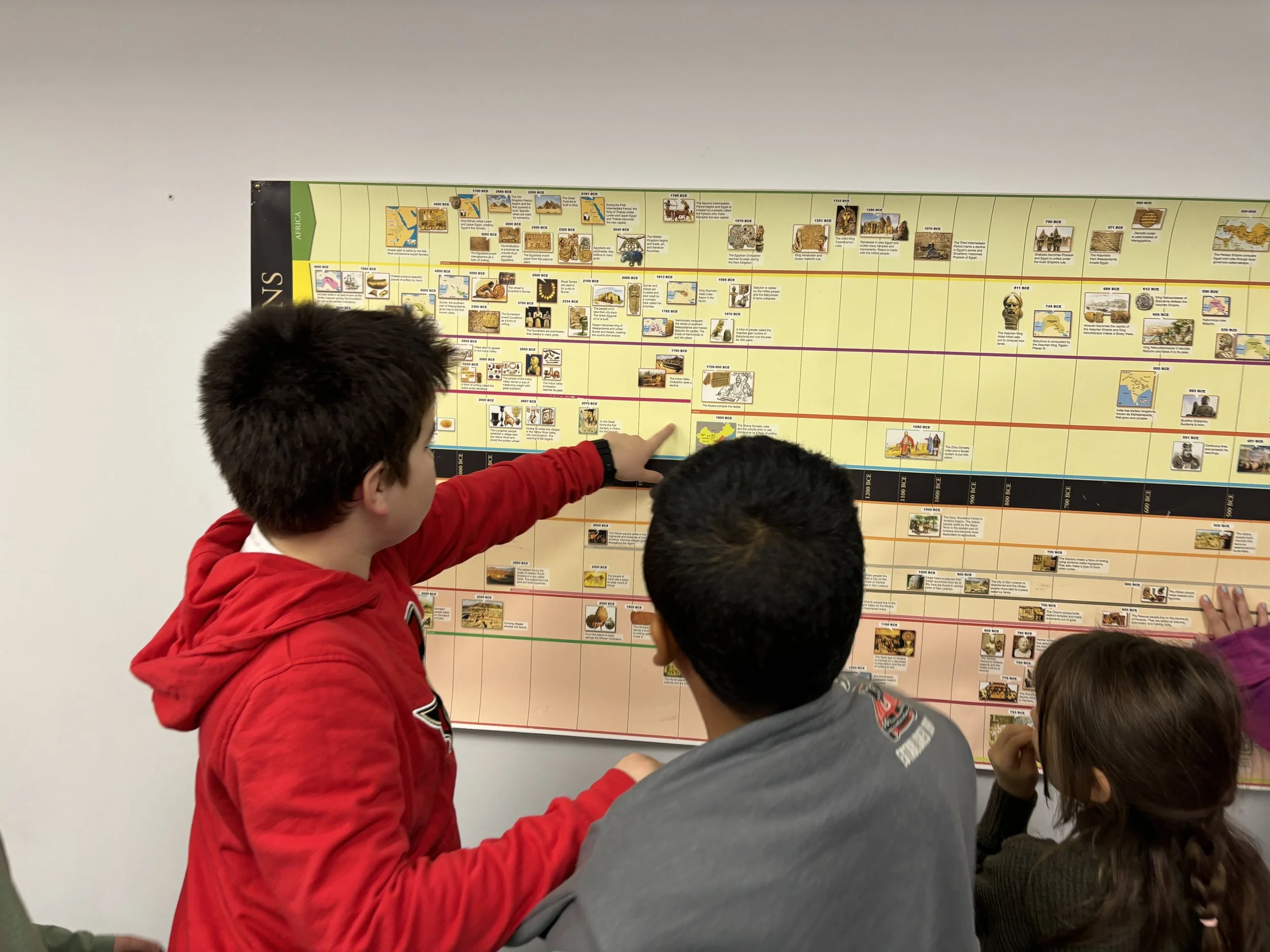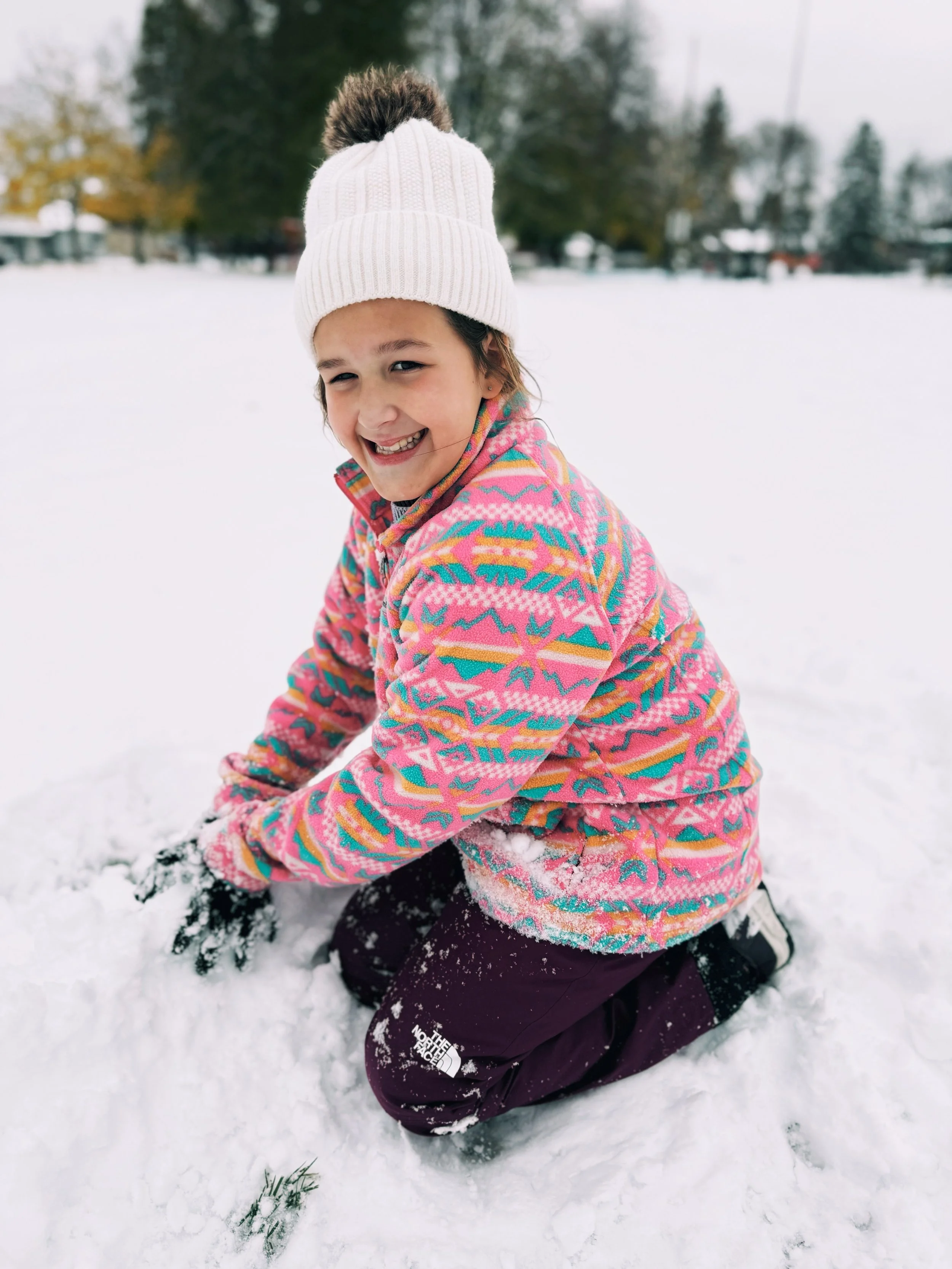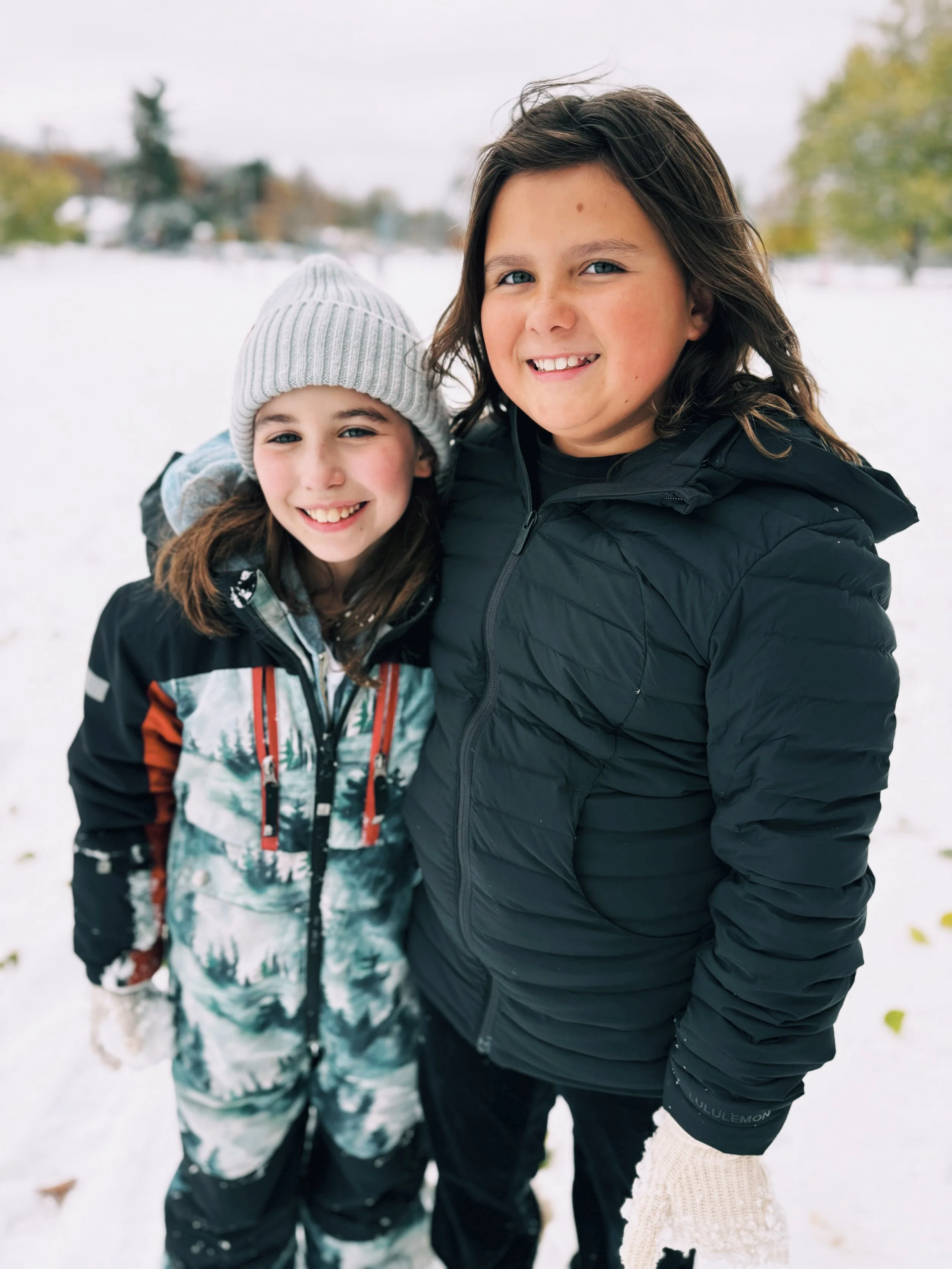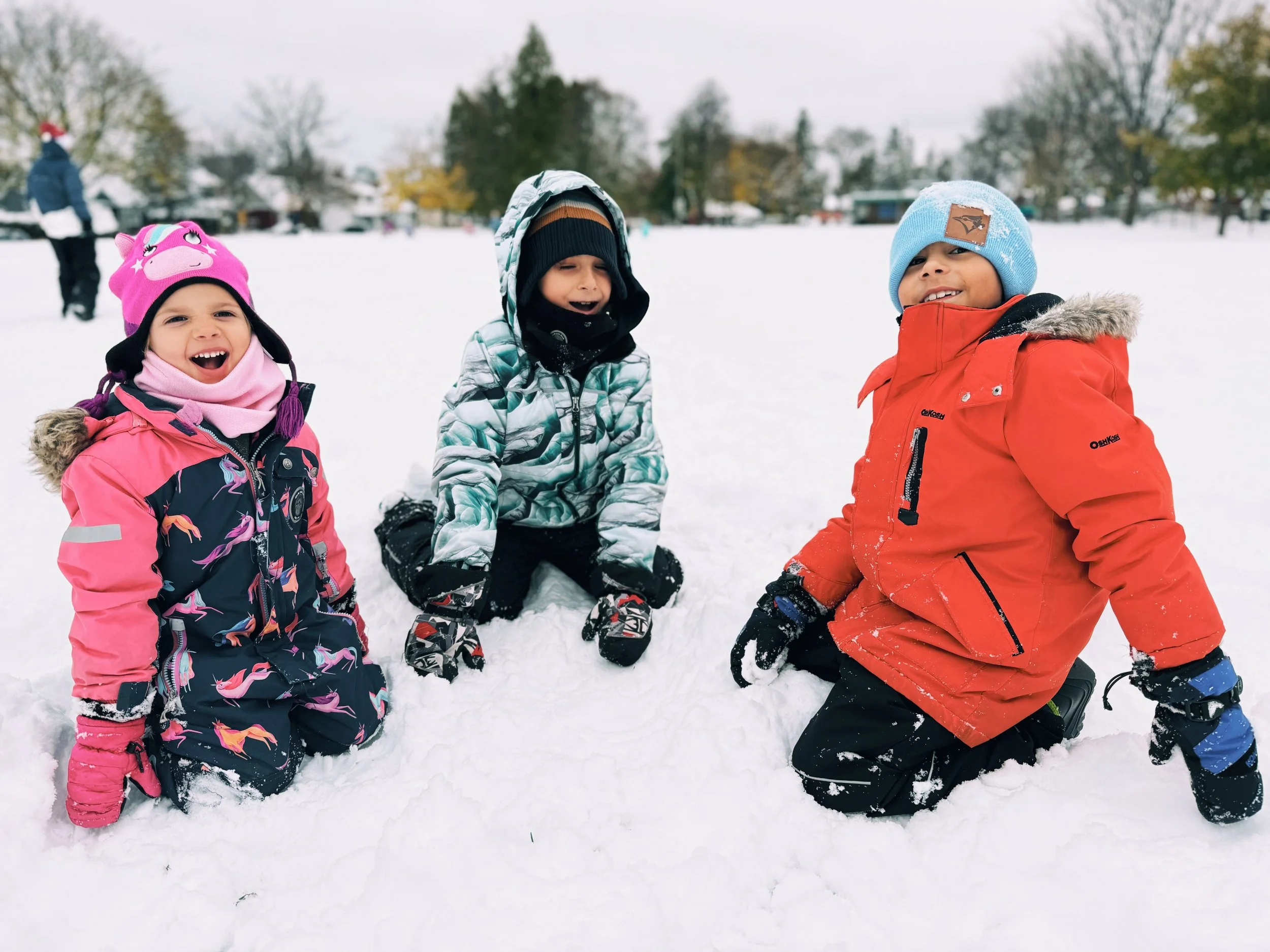Revel Recap: Nov 10-14
Important Upcoming Dates
Yearbook Cover Contest Posters Due Monday, November 17th
Collecting Donations for the Ottawa Food Bank and Toy Mountain from November 10th-December 12th, 2025
Session 2 Exhibitions
Exploration Studio: Monday, November 24th at 4:15 pm
Discovery Studio: Tuesday, November 25th at 4:15 pm
Spark Studio: Wednesday, November 26th at 4:15 pm
Spark Studio
Mindfulness and Launch
We began the week with a calming Lego Breathing Towers activity. Each learner received a small pile of Lego bricks and, with each slow breath in, added a piece to their tower. As they breathed out, they paused to notice how their tower grew. Each brick represented one calm, mindful breath. Afterwards, we officially launched our Toy and Food Drive! The Sparks learned about these important initiatives from the Ottawa Food Bank and Toy Mountain and worked together to create posters and presentations to help spread the word around our Revel community. On Tuesday we spent time learning about Remembrance Day. After reading the thoughtful story Poppies for Peace, the Sparks started creating beautiful poppy wreaths. On Wednesday we started our morning with a fun round of the Yoga Spinner game, practicing a variety of poses to stretch, balance, and energize our bodies. Afterward, we drew and designed our own Lego people! On Thursday, we continued our Lego theme by learning how to draw expressive Lego faces, experimenting with different emotions and features. To finish our mindfulness activities for the week, the Sparks created Lego mandalas, combining mindfulness and art in a colorful way. To end the week, we made our names out of Lego and then wrote in our gratitude journals about something we are grateful that we have learned about this year.
Quest
This week, Quest was filled with creativity, teamwork, and hands-on learning as our engineers explored a series of LEGO challenges! We kicked off the week with a LEGO Cup Challenge. Working in pairs, learners filled a cup with LEGO pieces and made their best estimates of how many legos were inside before counting to find the actual number. Using those pieces, they built their own unique creations and drew detailed pictures of what they had made. On Tuesday, learners were given the task of designing and building a boat that could float and carry a small animal toy. They experimented with different shapes and designs, testing their boats to see which ones stayed afloat the longest! Wednesday was all about problem-solving and creativity as students built their own LEGO marble mazes. They had a great time testing out each other’s mazes and discovering which designs worked best. We wrapped up the week on Thursday with a bridge-building challenge. The Sparks constructed bridges that spanned over paper acting as water and tested the strength of the bridge by seeing if it could support a small toy car. We can’t wait for you to see all of their amazing creations at the Exhibition!
Art
This week in our art workshop, we spent time reflecting on Remembrance Day through our creative work. The learners used paint markers to colour their wreaths a lovely shade of green. Once their painting was complete, they chose how many poppies to include, carefully colouring each one before attaching it to their wreaths. We had some great conversations about what the poppy represents and why we take time to remember. Their finished pieces made a beautiful tribute for Remembrance Day.
French
This week, we listened to Mimi Soleil. On Monday and Tuesday, we learned to sing “Bonjour! Comment ça va?”, “Tête, épaules, genoux, orteil” (Head, Shoulders, Knees and Toes), and “Alouette, gentille alouette.” On Wednesday, we finished a human body colouring activity, and Group 2 labelled the body parts in French on their drawings. On Thursday, we played in the gym to practice our colours and numbers, and played a game of Seek-a-Boo.
Reader/Writer Workshops
On Monday, Group One started their workshop with story telling. Using their new creative story cards, Mystery in the Forest, they came up with a wonderful story. Their story was based around a mischievous racoon who wanted to take things away from a princess. The Sparks worked well together and this story will be posted at the exhibition for families to read! Later in the week, this group focused on a new letter, J. Using the letter J, they came up with a selection of words and wrote them on a chalk board, white board or in their printing books. Lastly, using Lego, they made 5 uppercase and lowercase Jj’s. Meanwhile, Group 2 focused on the digraph “wh.” We began by listening to the Scratch Garden Phonics Song to help us learn and hear words that start with this digraph (what, when, where, and wheel). Afterwards, we read a phonics book called The Wheelbarrow. As we read, the Sparks listened carefully and raised their hands every time they heard a word beginning with “wh”. They did such a great job listening for this sound! Next, the learners practiced writing two “wh” words of their choice and drew pictures to match. They used one of their words to write a complete sentence. To finish our lesson, we came together as a group to write a sentence about what we like to build with LEGO, taking time to colour in the Lego brick we wrote it on. Learners shared that they like to build houses, roads, cars, and towers! On Friday, both groups continued working on their book study. We reread the book, How to Catch a Witch and then drew and labeled three things that happened in the story.
Math Workshops
Group 1 continued building their number-recognition skills this week using their math booklets alongside hands-on activities with LEGO and ten boards. Learners created the numbers 11–20 with LEGO bricks, practiced printing each number neatly, and counted spots on a ladybug to reinforce one-to-one correspondence. Others extended their learning with the addition board and used counting chains to explore skip counting in a fun and engaging way. Group two began with a game called Lego Tower Takedown. Working in pairs, each learner built a tower using 20 Lego pieces. They took turns rolling a die and removing that number of Legos from their tower. The first player to take down their entire tower was the winner! This game was great subtraction practice, while also encouraging teamwork and taking turns. Afterward, we continued building on our subtraction skills using the Montessori Stamp Game. Students worked on solving more 4-digit subtraction problems.
Geography
In Geography, we explored some of the most famous buildings and landmarks in North America! Together, we looked at pictures and learned fun facts about well-known structures such as the Empire State Building, The Statue of Liberty, and the Golden Gate Bridge in the United States. In Canada we looked at the CN Tower, Parliament Hill, Chateau Frontenac, and Habitat 67. In Mexico, we explored Chichen Itza and Palacio de Bellas Artes. Next, it was Sparks' turn to become architects and builders. Using LEGO, they worked to design and build the CN Tower.
Discovery Studio
Mindfulness and Launch
We started our week off with a lot of smiles as Rebels completed a mindful colouring activity all about poop! With the digestive and excretory system in mind as we embark on our fourth week of Human Body Systems, Rebels had a blast creating some fun drawings and colouring pages. As a jumping off point for Week 4, Rebels enjoyed a launch discussing the digestive and excretory systems, noting elements of both systems that they were familiar with as well as questions they had and were hopeful to answer this week. Tuesday morning we watched a video about the history of the poppy and spoke about the timeline and the ages of veterans from the two World Wars. Just before 11am, we tuned into the CPAC coverage of the Remembrance Day ceremony and listened to the national anthem, able to see the veterans, citizens and politicians gathered in attendance around the National War Memorial. We then listened to a recording of the “Last Post” and held a moment of silence to honour those who had lost their lives in conflict. On Wednesday, we played the New York Times Wordle and Connections puzzles. Rebels guessed the Wordle in five attempts with one to spare and got a perfect score in Connections (no lives used)! For their weekly Wednesday squad check-in, teams met to update their goal sheets and discuss takeaways from this week’s Quest topics. Bonus research prompt: what is a gastrointestinal virus? Thursday’s “Thank You For Sharing” brought our team in for a meaningful conversation about what makes Revel special and what we can do to make the most of this year. Not surprisingly, Rebels listed many opportunities for connection and school-wide celebrations. Suggestions such as more “whole-school” recesses, spirit days for the school where they could dress up with learners in every studio, even a “studio-swap!” where Rebels could spend the day working in another area of the school. The focus around spending as much time together as possible was just another reason why this team is so special - we have no doubt this will be an unforgettable year! Friday’s Boomwhackers was a great way to start our morning, with the first holiday song of the season, “All I Want For Christmas” by Mariah Carey. Friday’s Current Events report featured breathtaking images of the galaxy frog and a great discussion about November being National Financial Literacy month.
Reader Writer Workshops
This week, Rebels in Draw and Anchor worked away on their Human Body Journals, focusing on their choice of the Digestive System or Excretory System. Rebels are opting for independent opportunities to listen to the articles and work on completing two journal entries per workshop! With one more week to go before Exhibition, we began the discussion of how to elevate our Human Body Journals and get them “Exhibition ready!” On Thursday, Aim and Release Rebels checked in briefly at the beginning of workshop to show the progress being made on their Human Body Reports. Rebels made a clear goal to complete body paragraphs, tighten up conclusions and introductory paragraphs, add a section of “Fun Facts”, collect more photographs and make edits/add details as they begin to think about their final products heading into the final workshop before Exhibition.
Math Lab
This week’s lab focus was measuring time! First, Rebels met in the gym to flex their spatial reasoning skills, using their experience measuring the perimeter of the outdoor gardens and fenced-in area to try and estimate the length of our gym. They decided they needed to run back and forth across the gym seven times to equate to roughly 100 metres. We timed how many seconds it would take to run across the gym once and used this number to make estimates about how long it would take to run twice, three times, or 100 metres? Then we timed their runs! The fastest time to run 100 metres was 23.11 seconds!
Quest
How does our body know what to keep and what to get rid of? How does it complete these processes? Rebels learned all about the human body’s digestive and excretory systems this week! On Monday, we completed two diagrams to show some of the vital organs that help our body get the energy and nutrients we need (like the small intestine) and the organs that help expel toxins and waste (like the kidneys). Rebels studied both systems closely and made notes about each. On Tuesday, in more depth, we explored the nutrients our bodies need and started the Nobel Menu - Healthy Table Challenge! With their team, Rebels had to plan four meals, backed by their understanding of digestion and nutrition. On Wednesday, they had time to select and specify which foods give us the carbohydrates, protein, healthy fats, minerals and vitamins that we need to function. They investigated topics like how food is processed, and emerging research about how certain food may be more tempting to eat despite not having the nutrients we need, as well as how certain foods affect our brain function and gut microbiome. On Thursday we had a fantastic workshop with Little Medical School all about our skin. Rebels built a model of the skin’s layers including the dermis, epi-dermis, as well as the interconnected parts like a sweat gland, blood vessel, nerves, touch receptors, pores and hairs. Some even added black and/or white heads and warts to show some common skin concerns!
French
This week, we played a giant “Devine qui” (Guess Who) game in the gym using photos of the Rebels. To play, each Rebel had the chance to ask questions to figure out which Rebel had been selected. They practiced using vocabulary related to physical appearance, hair and eye colour, clothing, and other descriptive details. The game encouraged the Rebels to speak in full sentences, listen carefully to each clue, and use precise French vocabulary.
Civilizations
Our chapter this week was a story about the first cities of India: the Harappan civilization that lasted from about 2000 - 1750 BCE around the Indus River. Rebels mapped the river’s path as well as the site of Mohenjo-Daro and then shaded the area around the river to show the river valley region. We heard about the way these people relied on boats to make long journeys, transporting goods that were too heavy and cumbersome to transport on land. As we heard about the evidence of this civilization that archeologists have found, Rebels made guesses about what may have happened to them: they wondered if maybe there was an attack by another empire or a pandemic that could have wiped out the Harappans?
Additional Highlights
Discovery Studio’s Journey Meetings are well underway! Thank you so much to everyone who has joined us so far to discuss your Rebel’s progress and learning journey at Revel. We look forward to seeing more of you next week.
Exploration Studio
Mindfulness & Launch
Social awareness is all about understanding and navigating social interactions. It means recognizing the emotions, needs, and dynamics around you and responding appropriately. We had a great discussion regarding understanding group dynamics, recognizing social cues, understanding social norms, being culturally aware, identifying the emotional climate, and being socially responsive. Our biggest takeaways were to ensure we were being respectful when visiting other people's homes, paying attention to their rules and practices, and watching for cues that someone is no longer interested in a conversation. At Monday's Launch, we discussed the ethical implications of selling your house for double the money, knowing it would be replaced by an animal testing facility. The learner vote was split between selling and not selling, with both sides citing sound reasons for their decision. Throughout the rest of the Socratic discussion, Rebels debated whether their answers would change due to the amount of money offered, the type of testing being done, where the animals were sourced, and what the profits from the sale of the home could be used for. After an exciting fire drill in the snow, we returned to the studio to begin honouring Remembrance Day on Tuesday morning. Rebels learned about John McRae before reading along while listening to a recording of "In Flanders Fields." We identified the narrator and analyzed the poem in terms of tone, mood, and meaning. At 11:00 a.m., we tuned in to the ceremony at Parliament Hill and observed a 2-minute silence. On Wednesday, the Rebels worked on finishing their Fauvist-inspired animal portraits, their Math Lab "Dear Data" postcards, or a Galactic Art piece using pastels and black cardstock. After a morning walk around the neighbourhood, Rebels came in to discuss the news of Revel's closing at the end of this school year. We chose to focus on what we wanted to experience and explore this year, with learners specifying several of our annual traditions and hoping to go on another overnight trip this spring. After our learner-led puzzle session on Friday morning, our Current Events team presented stories about a black hole that releases light as bright as 10 trillion suns, Canada's declining unemployment rate, an escaped pig in Buffalo, NY, and a sports update.
Reader/Writer Workshop
After reviewing the steps and expectations for their Hobbit essays, Rebels utilized a graphic organizer to help them organize their thoughts and evidence. Depending on their essay topic, Rebels worked to identify three different events with a corresponding quote that backs their thesis. Next week, Rebels will use their completed pre-writing page to begin writing their essay.
Reading Challenge, Paragraph of the Week and Grammar
This week's Reading Challenge focused on characterization. During our lesson on Monday morning, Rebels learned about the eight types of characters (protagonist, antagonist, static, dynamic, flat, round, stock, and foil), direct vs. indirect characterization, and the STEAL (speech, thoughts, effect on others, actions, and looks) method for analyzing characters. They then utilized their core skills to complete the week's challenge.
Rebels were asked to write a paragraph arguing whether schools should or should not incorporate regular outdoor learning experiences (such as field trips and nature exploration) this week. After their free write, they needed to give credibility to their argument with a quote from an expert in the field and integrate it seamlessly into the paragraph. They were also asked to improve their piece by establishing their credibility as the author by incorporating ethos. Lastly, they needed to check their paragraph to ensure they didn't have comma splices before writing their final copy.
We also learned that we need to use commas when directly addressing someone in a sentence. Using a set of examples, we learned that the comma can appear before, after, or around the name or title, depending on its placement. After writing their own sentences on Monday using commas in a direct address, they corrected the sentences by adding the missing commas. On Wednesday, they continued their work by writing a letter to themselves, ensuring that their name or nickname was included at least three times to demonstrate how to use commas in a direct address correctly. They finished the week by editing two different paragraphs, adding in commas that were missed or correcting those that were misplaced.
Math Lab
We began our Math Lab with a Data Talk on a visualization of hit songs of the summer and their comparative energy, valence, volume, danceability, and acousticness. After listening to "1-2-3" by Gloria Estefan and Miami Sound Machine, we compared what we heard with the visualization. We then examined eight additional songs, analyzing their similarities and differences across various categories. With our Dear Data projects complete, Rebels explored data collected from blue whales by the Monterey Bay Aquarium Research Institute. With the help of videos and articles, Rebels learned what really happens underwater, the history of whale tagging, and modern methods of data collection. Using a series of graphing tools, they analyzed a data set and answered questions regarding how blue whales have evolved to be so big and the importance of research for conservation.
French
This week, the Loups-Garous (Werewolf) game was led and facilitated entirely by the Rebels from Group 2. They were responsible for organizing the round, explaining the roles, managing the game's flow, and keeping everything in French. They did an excellent job guiding the group and using strong oral communication skills!
Civilizations
What do blueberry muffins and cell phones have in common? Hint: It has something to do with dying stars. After trying to figure out which elements were in a blueberry muffin, which were in a cell phone, and which were in both, we learned about Threshold 3 - New Chemical Elements. After we identified the ingredients and Goldilocks conditions for this leap in complexity, we completed our third Threshold Card. Rebels then identified the causes and effects of star formation as a group before learning more about a specific chemical element. In comics, chemical elements often transform normal people into superheroes. But what if those chemical elements themselves are the real superheroes? We concluded our class with a creative project where learners chose an element and transformed it into a superhero, complete with strengths, weaknesses, and, in some cases, an elemental sidekick!
Quest - Biomimicry
We reached the Innovation stage in the Biomimicry-MIMIC framework this week. Rebels worked to create a biomimicry innovation that would help solve their selected problem. After going over the Judging Rubric to remind ourselves of the end goal, learners completed a Biomimicry Brainstorm on Monday. Learners compared their abstracted design strategies side-by-side, looked for central ideas or unifying concepts that could summarize the strategy and be used for design. They then considered potential application ideas and drew connections between them to find the best solution. Once chosen, teams spent the rest of the week making concept models (drawings, diagrams, or physical replicas/prototypes) of their design ideas, iterating as they progressed. Next week, they will work on the final step - Communicate. They will create presentations and videos to pitch their solution to the public at the Session 2 Exhibition of Learning.
Personal Finance
This week was all about spending and savings plans in our personal finance class. We learned about discretionary income and non-spending alternatives before Rebels played another month of the Budget Game!
Potential Discussion Ideas or Questions to Ask Your Rebel:
Spark Studio
Which LEGO Challenge (boat, maze, or bridge) did you enjoy the most? Which one did you find the most difficult?
Can you tell me about the Ottawa Food Bank? Which food items are most needed? What is Toy Mountain? Should we wrap the toys before we donate them?
What are three things that happened in the story How to Catch a Witch?
Can you tell me one person you played with at recess this week? What did you play together?
Discovery Studio
Math Lab Group 1: If it takes someone 4 seconds to run across the Revel gym (about 15 metres), how long would you expect it to take them to run 100 metres?
Math Lab Group 2: Assuming they can maintain their pace, how long would it take a Rebel to run a full marathon (42.2km) if it takes 30 seconds to run 100 metres?
Which foods did you add to your healthy table, and why did you choose them?
Are there any foods we eat that might not contain the nutrients we need, and if so, what would be a more nutritious replacement?
Exploration Studio
Do you feel that you are socially aware? Which area do you need to work on the most: understanding group dynamics, recognizing social cues, understanding social norms, being culturally aware, identifying the emotional climate, or being socially responsive?
What experience or tradition are you most looking forward to this year?
Why is the death of stars important?
In Math Lab, how did you know when the whale was diving? When the whale was breathing? How did you use the graph to determine when the whale opens its mouth to feed?
